|
Summertime brings with it beach and pool time, picnics, vacations, and lazing in the hammock. Unfortunately, heat waves and unbearable humidity can also accompany the summer months. One often hears the phrase “dog days of summer.” The origin of this phrase is related to the stars, not dogs wilting in the summer heat! Sirius is the brightest star in the night sky and part of the constellation Canis Majoris—the “Greater Dog.” The ancient Romans and Greeks believed that when the Dog Star, Sirius, appeared in the sky and occupied the same region as the sun, it created the hottest days of the year. They also believed it brought bad luck, drought, and chaos. The Romans called it “dies caniculares” or “days of the dog star.” For the ancient Romans, the dog days of summer were believed to occur from approximately July 24 to around August 24. Over time, the constellations have drifted, and the “dog days” dates have changed. According to the Old Farmer’s Almanac, the Dog Days are considered to be between July 3 and August 11 in the Northern Hemisphere. However, it seems that these days, heat and humidity may linger for a bit longer, regardless of Sirius’s position in the sky. Although one might tend to prefer white or rosé wines as the temps begin to climb, red wines should not be overlooked during the summer months. Many light-bodied to full-bodied reds are ideal for sipping outdoors while enjoying grilled fare. For instance, unoaked or lightly oaked red wines tend to be lighter and fruitier. Slightly chilling many red wines for no more than 30 minutes can enhance the flavors, minimize the focus on alcohol, and make the wine more refreshing. When choosing a wine to drink while outside on a hot day, I recommend staying below 14% ABV. (alcohol by volume) Alcohol is a diuretic that contributes to dehydration. And when combined with outside heat, which leads to sweating, one can become dehydrated quickly. Therefore, it is essential to drink water and stay hydrated! Here are two white and two red Italian wines to enjoy this summer or any time of the year. The Whites Bolla Soave Classico DOC 2023 Founded in 1883, Bolla winery is situated in the countryside of Valpolicella and produces classic Venetian wines. This wine is 85% Garganega and 15% Trebbiano di Soave. Grapes are sourced and handpicked from 15-to 25-year-old vines in the Soave Classico hills, where the soil is of volcanic origin. After fermentation in stainless steel vats, the wine is left on the fine lees at a low temperature until it is ready for blending. Nose: White blossoms, apple, tropical fruit and citrus. Palate: A dry white wine with lots of character. Silky texture with pineapple, melon, honeysuckle, and lemon curd. Light and refreshing! Alcohol: 13% SRP: $9.99 Pairing suggestions: Enjoy as an aperitif or with seafood, light pasta, risotto, or salads. La Scolca Gavi Dei Gavi Gold Edition DOCG 2021 La Scolca is located in the prestigious terroir of Rovereto di Gavi in the Piedmont region. They have been producing wine for over 105 years and are in their fifth generation, where tradition is combined with modernity. 100% Cortese grapes are sourced from the Gavi hills in vineyards with vines up to 60 years of age. Fermentation takes place in stainless steel tanks and rests on the lees until bottling. Nose: White flowers, green apple, almonds, citrus and minerality. Palate: A dry, crisp wine with fresh acidity and balanced notes of flint, almonds, honeydew, and white fruit. A hint of citrus teases the palate on the finish. Alcohol: 12% SRP: $16 Pairing suggestions: Perfect as an aperitif or served with appetizers, fish, seafood, white meat, risotto, or Asian cuisine. The Reds Sensi Sabbiato Bolgheri Rosso DOC 2022 Sensi’s family history started in Chianti in 1890 and then expanded to other areas in Tuscany. Currently, the winery is managed by the fourth generation, which produced its first Bolgheri DOC wine in 2007. The grapes for this wine are a blend of 60% Cabernet Sauvignon and 40% Merlot, sourced from Bolgheri and Livorno in sandy, mineral-rich soils near the Tyrrhenian coast in Tuscany. After fermentation, the wine aged for 12-14 months in French oak barriques, approximately 50% of which were new wood. Further aging took place in bottles. Nose: Dark berries, baking spice, croissants, a touch of herbs and earthy. Palate: Aromas segued onto the palate with notes of plum, dark cherry, and pomegranate, balanced with acidity and salinity. Dark fruit lingers on a long finish. Alcohol: 14% I’ve included this wine despite its 14% alcohol volume. It is a great addition to enjoy with barbecue fare. But save it for a cool summer day or evening, not a heat wave! SRP: $18 Pairing suggestions: Enjoy with your favorite grilled meat, seafood, white meat, or pasta and sauce. Tenuta Regaleali Lamùri Nero D’Avola Sicilia DOC 2020 Tasca Conti D’Almerita boasts over 200 years of winemaking history in Sicily, dating back to 1830. It remains family-owned and run by the Tasca family. They have five estates throughout Sicily, with Tenuta Regaleali considered the “mother estate” comprising 550 hectares in the highlands of central Sicily. In the Sicilian dialect, Lamùri means ‘love’ and represents the Tasca’s love for their native Nero d’Avola grape variety, estate-grown at some of the highest points in Sicily. This wine is 100% Nero d’Avola. After fermentation, the wine was aged for 12 months in 20% new and 80% 2nd and 3rd-year French oak barrels. Nose: Floral, dark cherry, berries, baking spice, herbs, and a hint of flint. Palate: Aromas spill onto the palate with soft tannins, berries infused with balsamic, and a savory finish of spice and acidity. Alcohol: 13% SRP: $19.99 Pairing suggestions: Grilled meat, chicken, game, seared tuna, pasta and red sauce, or pizza, Please remember that alcohol, in combination with high temperatures, can dehydrate us quickly, so be smart. Drinking plenty of water is essential when outdoors in sweltering heat, especially if you plan to consume alcohol! Until next time…
Cheers! Penina To leave a comment or if you have an inquiry, please contact me at [email protected] As most of you know by now, I drink white and red wines all year long. My palate and mood dictate what I drink, not the seasons. However, with the warmer weather finally here, the lighter wines tend to take preference, but not always! Sipping Pinot Grigio is a treat that is savored throughout every season in my home. To quote me from an article written in 2022, “Many, many years ago, when my taste buds started developing a fine appreciation for wine, Pinot Grigio was not high on my list of enjoyable wines. I felt it lacked personality. It wasn’t until several later that I tasted Pinot Grigio from the northeastern region of Italy for the first time and had an “aha” moment. So this was how Pinot Grigio was supposed to taste! I was hooked!” Pinot Grigio, aka Pinot Gris, is a white wine grape that thrives in a cool climate. The color of the skin ranges from dark purple to pink to grayish. (grigio means gray in Italian.) It is a dry, easy-drinking wine that is clean, fresh, and aromatic. Flavors range from zesty and straightforward to complex. Typical flavor profiles of this wine include but are not limited to floral notes, green apple, lime, lemon, white stone fruit, pear, honeysuckle, bitter almond, bright acidity, and minerality. Due to Pinot Grigio’s racy acidity, it’s a versatile companion to a variety of dishes. From seafood, especially oily fish, to shellfish, white meat, light pasta, salads, and vegetable risotto, it pairs beautifully. Or, enjoy it as an aperitif! I was recently offered a few Pinot Grigio samples to review, to which I replied, “Yes, please!” So, let’s dive in! Trentino Ventessa Pinot Grigio Vigneti delle Dolomiti IGT 2023 This wine is produced by Mezzacorona, located in Trentino in the Italian Alps. The winery, surrounded by the Adige River, has been crafting estate-grown wines since 1904. Ventessa is made without chemical alteration. After the grapes are hand-harvested, they are immediately crushed and undergo a very short cold maceration in the press. The grapes are then softly pressed. The musts are then fermented for eight days. The wines are kept on the yeasts in steel tanks and are naturally low in calories and alcohol. Nose: White flowers, peach, and melon. Palate: White stone fruit, honeydew melon, citrus, and a touch of minerality balanced with crisp acidity. A light and refreshing sip! Alcohol: 9% SRP: $10.99 Pairing suggestions: Enjoy as an aperitif, or Mezzacorona suggests pairing with delicate finger foods, shellfish, medium-mature cheeses, and baked & fried fish dishes. Veneto Pasqua Black Label Pinot Grigio delle Venezie DOC 2023 My “love affair” with Pasqua Wines continues with this Pinot Grigio. Their expressive and memorable wines always please my palate. This family-run business was founded in 1925 and is located in Verona. It is led by third-generation Pasqua brothers Riccardo and Alessandro. The company has complete control over approximately 741 acres of vineyards (1/3 is estate-owned), stretching from Lake Garda to Soave. After the grapes are harvested, fermentation takes place in steel tanks. 30% of the wine ends alcoholic fermentation in French oak barrels and continues aging in Tonneaux of second use for about 3 months. I love the glass stopper! Nose: Beautiful floral notes with white stone fruit, pear, toast, and a trace of vanilla. Palate: Aromas segue onto the palate with nuanced notes of apricot, white peach, and tropical fruit. Toasty flavors and vanilla linger on the finish. It is complex, balanced, and very satisfying. Alcohol: 12% SRP: $14.99 Pairing suggestions: Pasqua suggests fish appetizers, shellfish, clams, fish-based first courses, white meats, and sushi. Friuli Venezia-Giulia Livio Felluga Pinot Grigio DOC 2023 Founded in 1956 by Livio Felluga, one of the most respected producers in Friuli, this 500-acre estate has 370 acres of wine vineyards in the Collio and Colli Orientali del Friuli. Livio is renowned for his dedication to reviving high-quality viticulture in Friuli. Livio’s son, Andrea Felluga, now continues the family legacy of producing wines of distinction. Grapes for this wine were hand-picked. After fermentation in steel vats, the wine was kept on the lees for a few months to increase its complexity, creamy texture, and suitability for aging. Once bottled, it matured in temperature-controlled rooms. Nose: A bouquet of white flowers, peach, pear, apricot, and lemon.
Palate: This wine dances with aromas that segue onto the palate. Minerality, crisp acidity, and a savory/salty dance add to this wine’s complexity. Lemon tarts and sweet apples linger on a long and fruity finish. Alcohol: 13.5% SRP: $35 Pairing suggestions: Livio Felluga noted that this wine pairs beautifully with fish, shellfish, risotto, and baked vegetables. Remember, Pinot Grigio is not just a summer indulgence; it’s a year-round delight. Its crisp, clean taste is a perfect match for any season, whether it’s a warm summer day or a cozy winter evening. So, next time you are offered a glass of Pinot Grigio from northeastern Italy, say, “Yes, please!” Until next time… Cheers! Penina To leave a comment or if you have an inquiry, please contact me at [email protected] As you might know by now, I don’t need a particular reason to open a bottle of wine, regardless of the price tag. I’m all about celebrating “just because” moments! So, whether you’re in the mood for bubbles or still wine, these wallet-friendly and easy-drinking wines are an excellent addition to keep in your refrigerator for your “just because” moments! Occasionally,, I review new vintages of my favorite wines from producers I have written about in the past. And so it is with Pasqua Vigneti é Cantine, who always pleases my palate with their expressive and memorable wines. Still Wines Pasqua “11 Minutes” Rosé Trevenezie IGT 2023 Founded in 1925, this family-run business is located in Verona, Italy. and is led by third-generation Pasqua brothers Riccardo and Alessandro. The company has complete control over approximately 741 acres of vineyards (1/3 is estate-owned), stretching from Lake Garda to Soave. This wine is a unique blend of sustainably grown grapes sourced from Lake Garda. The blend is 50% Corvina, 25% Trebbiano di Lugana, 15% Syrah and 10% Carménère. It is called “11 Minutes” because after harvest thes grapes are gently pressed, and with only 11 minutes of skin contact, the most noteworthy qualities of the grapes are extracted, and the color is obtained. The bottle is an unusual and eye-catching oval shape, with an alluring photo of Lesbia seen through the front label. Nose: Lovely floral notes, red berries, citrus, and a hint of herbs. Palate: This is a fresh and inviting rosé with wild strawberries, spice, vibrant acidity, and a touch of pink grapefruit on the finish. Alcohol: 12.5% SRP: $18.99 Pairing suggestions: Enjoy as an aperitif or serve with grilled fish, seafood, risotto, or salads. Veramonte Chardonnay 2022 Viñedos Veramonte is an organic estate established over 25 years ago, and it sits at the extreme eastern end of Chile’s Casablanca Valley. The Veramonte vineyards are located in both Casablanca Valley and Colchagua Valley. Organic grapes for this 100% Chardonnay are sourced from Casablanca Valley. Part of the wine is barrel fermented in neutral oak with wild yeasts for about eight months, and the rest in stainless steel tanks. Nose: Floral, white stone fruit, citrus, minerality, and a hint of mint. Palate: Aromas segue onto the palate with subtle oak notes, nice acidity, lemon drops, and a touch of salinity. This is a fresh and lively wine. Alcohol: 14% SRP: $13.99 Pairing suggestions: Serve as an aperitif or pair with appetizers, seafood, grilled salmon, veggies, and pizza. Sparkling Wines Valdo Marca Oro Valdo was founded in 1926 by the Societa Anonima Vini Superiori and purchased by the Bolla Family in 1938. “Over 90 years of continuous innovation with an ongoing quest for quality and devotion to respecting the vineyards & wine-making traditions of the region has helped to secure Valdo’s position as one of the leading and most trusted Italian wineries specialized in Prosecco and sparkling wines.” (Valdo quote) Sparkling wines labeled Prosecco DOC (Denominazione d’Origins Controllata) come from nine provinces between Veneto and Friuli-Venezia Giulia. What is considered to be the best quality Prosecco comes from the Treviso province, especially the area between Valdobbiadene and Conegliano, a hilly area that is the home of Prosecco Conegliano Valdobbiadene Superiore DOCG (Denominazione d’Origins Controllata e Garantita) The Valdo winery is located at the foothills of the “pre-alps” around Treviso in Valdobbiadene, the heart of Prosecco DOCG.with vineyards in the DOCG and DOC appellations. Valdo Marca Oro Prosecco DOC Rosé Brut The grapes for this sparkling wine are sourced from the Prosecco DOC appellation in Veneto, Italy. It is 90% Glera and 10% Pinot Noir and produced using the Charmat Method. Nose: Lovely floral notes with pear, sweet apples, and red berries. Palate: Persistent and fine bubbles with aromas that segue onto the palate. Bright acidity and a creamy mouthfeel add to a long and refreshing finish. Alcohol: 11% SRP: $15.99 Pairing suggestions: Enjoy as an aperitif or serve with fish, pasta, salads, grilled chicken, or dessert. Valdo Marca Oro Prosecco DOC Brut The grapes for this 100% Glera sparkling wine are sourced from the Prosecco DOC appellation in Veneto, Italy. It is produced and aged using the Charmat method, followed by one month in the bottle. Nose: Floral bouquet with green apples, white stone fruit, and hints of citrus. Palate: It has ersistent and fine bubbles with crisp fruity notes, lemon, and a touch of melon. It has excellent structure and is a fresh and lively wine! Alcohol: 11% SRP: $14.99 Pairing suggestions: Enjoy as an aperitif or serve with Asian cuisine, grilled fish, crab quiche, or turkey burgers. FIOL Prosecco DOC Rosé 2021 FIOL (pronounced FEE-yol) means “son” in Venetian dialect and “chap” in English. FIOL was founded in 2011 by Gian Luca Passi and co-founder Giovanni Ciani Bassetti. They are childhood friends who grew up surrounded by Prosecco. “Most local winemakers have been drinking sparkling wine for 50 years and need an extraordinarily strong bubble to really feel it. We wanted something gentler, more subtle, more fruity.” says Gian Luca Passi.” This rosé is made with 85% Glera and 15% Pinot Noir sourced from Prosecco DOC appellation. The Charmat method was used for production. Nose: White flowers, red berries, and citrus.
Palate: Persistent and creamy bubbles with raspberry, strawberry, lemon, and a touch of salinity. Simple, balanced, and elegant, with persistent bubbles to the last drop! Alcohol: 11% SRP: $22 Pairing suggestions: Serve as an aperitif or enjoy with seafood, grilled fish, chicken, salads, lobster rolls, or mushroom risotto. The above wines are perfect to enjoy this summer and all year round! Pop a cork and indulge in a “just because” moment! Until next time… Cheers! Penina To leave a comment or if you have an inquiry, please contact me at [email protected] Fourth of July has come and gone, and the fireworks and sparklers have been put away. However, the sparkles, as in sparkling wine, continue at my house with corks popping and bubbles flowing! I never need an occasion to pour sparkling wine, and as I’m sure you all know by now, I love celebrating “just because” moments. Don’t you? I have a wonderful lineup of delicious Italian sparkling wines, specifically Prosecco, that will tickle your palate and won’t put a dent in your bank account. Before we get to the reviews, let’s take a quick trip to Italy. Prosecco is a sparkling wine produced in the Veneto region of the northeastern part of Italy and is made primarily with Glera, a white grape variety. Here is a brief overview of the production area. Sparkling wines labeled Prosecco DOC (Denominazione d’Origins Controllata) come from nine provinces between Veneto and Friuli-Venezia Giulia. What is considered to be the best quality Prosecco comes from the Treviso province, especially the area between Valdobbiadene and Conegliano, a hilly area that is the home of Prosecco Conegliano Valdobbiadene Superiore DOCG (Denominazione d’Origins Controllata e Garantita) There are three communes in the Prosecco DOCG: Conegliano, Valdobbiadene, and Asolo, located about 26 miles north of the Treviso airport. Asolo, a smaller town known as the “City of 100 Horizons” because of its spectacular panoramic views, is also included in the Prosecco DOCG and called Asolo Prosecco Superiore DOCG. Conegliano Valdobbiadene and Asolo have ancient origins of vine growing dating back to the Roman Empire, but the first written documentation connecting Prosecco to this area is from 1772. The DOC was established here in 1969, and the historic production of Prosecco has been limited to 15 communes. In 2009, Conegliano Valdobbiadene Prosecco DOCG and Asolo Prosecco DOCG certification was issued. As of January 1, 2021, the Denomination di Origins Controllata consortium gave its final stamp of approval for making Prosecco Rosé, setting these wines apart from other pink sparkling wines made in Italy. The grapes for Prosecco Rosé must be sourced from a specific geographic area that has passed the Italian Government’s quality requirements. In addition, only Glera grapes (85 -90%) and Pinot Noir (10-15 %) are allowed. The DOC guidelines also require Prosecco Rosé to be fermented in stainless steel tanks for at least 60 days. Also, they must be vintage-dated and labeled Prosecco DOC. These sparkling wines range in style from very dry to slightly sweet. This area is rich in history, culture, and beauty, and the breathtaking countryside is filled with hills and rolling slopes rising up from the Piave River. From early origins, a glacier slid down from the Dolomites and came to rest in a valley that eventually became the riverbed of the Piave. The river begins in the Alps and flows into the Adriatic Sea. The local soil is attributed to this glacier and can vary depending on the slope of the hill. Some areas contain rock, sand, clay, and iron oxides. In areas unaffected by the glacier, the soils consist of marl and sandstone and are less deep and more porous. Because Conegliano Valdobbiadene and Asolo are situated between the sea and Prealps, the area experiences a mild climate with constant breezes. Vineyards have excellent sun exposure and benefit from the altitude and broad differences between day and night temperatures. The slopes, micro-climate, sun exposure, and various soils make this an ideal setting for growing Glera grapes for the production of Prosecco Superiore DOCG. Unlike the traditional method used to produce sparkling wines such as Champagne, Cava, and Franciacorta, which goes through its second fermentation in the bottle, most Prosecco is made using the Charmat-Martinotti method, where the second fermentation takes place in stainless steel tanks. Due to the Glera grape’s moderately high acidity and typical characteristics of white flowers, peach, melon, apple, and pear, it is the perfect grape for sparkling wine. So, let’s taste a few wines! Bele Casel Asolo Prosecco Superiore DOCG Vecchie Uve Extra Brut 2019 Bele Casel estate is located in the heart of Asolo, with 12 hectares of hillside vineyards in Cornuda, Maser, and Monfumo. Glera and other local varieties for this wine are sourced from Monfumo vineyards, with an average vine age of 50 years old. Secondary fermentation takes place in pressure tanks for 18 months on the lees. Nose: Delicate, fruity aromas, floral, pear, sweet apple, and herbs. Palate: Creamy and persistent bubbles lead to a fresh and vibrant wine. Aromas segue onto the palate, with pear and apple lingering for an elegant finale. This wine can be aged in the bottle for six to eight years. Alcohol: 11% SRP: $24 Giusti Asolo Prosecco Superiore DOCG Brut NV From the first vineyard, owner Ermenegildo Giusti, planted in 2002, Società Agricola Giusti-Dal Col srl has grown to 75 hectares. The estate lies in the Montello and Pieve hills in eastern Veneto, between Treviso, Venice, and Asolo. This sparkling wine is 100% Glera harvested from vineyards in the hilly area of Montello and the Asolo hills. Secondary fermentation takes place in pressure tanks. Nose: A lovely floral bouquet with tart apple and lemon. Palate: Creamy and persistent bubbles with brisk acidity, pear, apple, peach, lemon zest, and minerality. Alcohol: 11.5% SRP: $14 Montelliana “57” Asolo Prosecco Superiore DOCG Extra Dry This wine is named for the year the winery was founded, in 1957. Cantina Montelliana is located in the heart of the Marca Trevigiana, at the foot of Colli Asolani and Montello district. It is a cooperative of 400 associated vine growers that produce Prosecco DOC and DOCG. This 100% Glera sparkling wine is made using the Charmat method. Nose: Fruity bouquet with floral, apples, melon, and peach. Palate: Creamy perlage with apples, pear, white peach, white flowers, minerality, and vibrant acidity. Alcohol: 11% SRP: $ $14 Villa Sandi Villa Sandi is located in the heart of the Treviso Province at the foot of Valdobbiadene Prosecco DOCG hills. The estate boasts an extensive network of underground cellars dating back to 1622. Villa Sandi is owned by the Moretti Polegato family, purchased in 1970, and is a family-run business. They have five estates in the DOC and DOCG areas between the regions of Veneto and Friuli Venezia Giulia. Villa Sandi Il Fresco Prosecco DOC Rosé Millesimato 2021 This wine is a blend of 85% Glera and 15% Pinot Noir. Grapes are sourced from vineyards in the Veneto and Friuli Venezia Giulia regions. The wine is made using the Charmat method. Nose: Rose petals, raspberry, a hint of citrus, and pear. Palate: Fresh strawberries and cream come to mind with this delectable rosé. Creamy bubbles, red berries, floral notes, and bright acidity. Very refreshing! Alcohol: 11% SRP: $22 Villa Sandi Valdobbiadene Prosecco Superiore DOCG Extra Dry NV The grapes for this wine are sourced from the hilly countryside of Conegliano-Valdobbiadene DOCG, in the Valdobbiadene DOCG appellation. It is a blend of 85% Glera and 15% Chardonnay. Nose: Beautiful floral notes with hints of honeysuckle, white stone fruit, and apple. Palate: Aromas segue onto the palate with creamy bubbles and lively acidity. Alcohol: 11% SRP: $25 Villa Sandi Il Fresco Prosecco Biologico Organic Brut DOC NV This sparkling wine is Certified Organic by Valoritalia (a company for the certification of quality and Italian wine production S.r.l.), which means no synthetic chemicals are used in the wine growing process. It is 100% Glera and is produced using the Charmat method. Nose: Floral with a touch of edelweiss. It is fruity, with white stone fruit and melon. Palate: Fine and persistent bubbles, dry, sweet apple, white peach, and honeydew. Fresh and lively! Alcohol: 11% SRP: $22 LaMarca LaMarca was established in 1968 and is a wine-producing company representing the products of nine cooperative wineries and fourteen processing plants in the heart of the province of Treviso, specifically, LaMarca Trevigiana. LaMarca Prosecco DOC NV This wine is 100% Glera, sourced from hundreds of small villages throughout the Prosecco DOC region. It is produced using the Charmat method. Nose: Floral notes, citrus, white stone fruit, and honey. Palate: This a fresh and lovely wine with crisp notes of green apple, citrus, grapefruit, minerality, and a touch of lemon zest on the finish. Alcohol: 11% SRP: $19 LaMarca Prosecco Rosé DOC 2021 Glera and Pinot Noir (10-15%) are sourced from vineyards throughout Treviso’s hillside along the Piave River. An extended secondary fermentation for at least 60 days takes place in stainless steel tanks. Nose: Floral, red berries, white stone fruit, and a hint of herbs. Palate: Fresh and crisp, with raspberry, strawberry, cherry, citrus, white peach, minerality, and lively bubbles. Alcohol: 11% SRP: $19 Enjoy these sparkling wines as an aperitif or pair with just about anything from salty to sweet, appetizers, main courses, and desserts! Here are a few food pairing suggestions: creamy, mild, or savory cheese, apple and goat cheese salad, seafood, shellfish, charcuterie board, pizza, spicy Asian cuisine, pasta, grilled white meat dishes, roasted veggies, delicate pastries, and salted popcorn! I look forward to returning to this region soon to soak up more beauty, culture, and sparkling wine! In the meantime, I’ll pour a glass of Prosecco and let it transport me back to this magical region with every sip I take. Pure bliss! Until next time…
Cheers! Penina To leave a comment or if you have an inquiry, please contact me at [email protected] A few months ago, I was invited to participate in a virtual tasting of six Bardolino Cru wines presented by the Consorzio Di Tutela Chiaretto e Bardolino and led by Angelo Peretti, Director. Below is a brief outline of our meeting and some interesting facts! The Bardolino wine region is located in the province of Verona in the Veneto region of northeastern Italy, bordering the eastern shores of Lake Garda. In 1825, three areas within the Bardolino winemaking region were identified and recognized by international grape merchants for their production of fine and elegant wines. These crus (subzones) are La Rocca, Montebaldo, and Sommacampagna. In 1968 Bardolino wines were given DOC title, but the three crus were not included. It wasn’t until 2015 that the Bardolino Cru project was initiated, and in 2018 the Consorzio asked the Italian government to recognize the crus. Finally, on April 12, 2021. the wines from all three crus were officially produced with DOC title and new regulations approved by the Italian government. The name of the cru has to be written in large font above the name Bardolino on every bottle due to each cru being a subzone with its own specific regulations. Bardolino wines are made with Corvina and a small percentage of Rondinella, both indigenous red grapes of the Verona province. About 25% of the wineries are organic, which is about 18% of the vineyards, with many of the wineries converting to biodynamics. Lake Garda is the largest lake in Italy and is one of the northernmost Mediterranean climates in Italy despite its location at the foothills of the Alps. The lake water is colder than the air in summer and warmer in winter, which significantly impacts the temperature, lessening the hot summers and harsh winters here. The lake basin was shaped by glaciers from 600,000 years ago, which left behind large deposits of material, the morainic hills, deposited in the large amphitheater of Lake Garda. Bardolino region is situated on the eastern shore of this morainic amphitheater. Due to the many deposits left by the glaciers, there are 66 different soil types that the zoning project has identified. Here are three wines to tempt your palate, one from each cru. La Rocca La Rocca is named for the hill overlooking Lake Garda. It is the closest district to the shores of the lake. Wines from this cru typically have a complex bouquet that usually includes raspberry and cinnamon. Giovanna Tantini La Rocca Bardolino DOC 2020 This wine is made with Corvina and a small amount of Rondinella. The grapes are handpicked and sourced from vineyards with morainal, gravelly, calcareous, and alluvial soils. Each grape variety is vinified separately, then blended and aged, 80% in stainless steel for 15 months and 20% in 5 hectolitre tonneau for one year. It remains in bottle for three months. The color is bright ruby with notes of fresh berries, cherry, sweet spice, and nice acidity, and it is smooth and balanced. Serve with meat, risotto, fish, light stews, or cheese. Montebaldo The name for this cru is derived from the mountain of the same name. It is the northernmost and highest point, with higher altitudes and a cooler climate. Wines from this cru typically have aromas of strawberries and cloves. Vigneti Villanella Montebaldo Bardolino DOC Morlongo 2020 The grapes for this wine are Corvina, Rondinella, and Corvinone. They are sourced from vineyards in the south-facing morainic hills in the hinterland of the lake. The soil is clay mixed with limestone. The blend is aged in large oak casks and then time in the bottle before release. The wine is bright ruby with a hint of garnet. Lovely aromas of fresh fruit with notes of strawberry and baking spice segue onto the palate. Hints of black pepper, balsamic, and strawberry linger on the finish. Serve with pasta, risotto, grilled chicken, fish, or appetizers. Sommacampagna This cru is in the southeastern hills and is the most southern cru and the warmest. Wines lean toward notes of cherry and black pepper. Monte Del Frà Sommacampagna Bardolino DOC Bonomo 2020 The grape varieties for this wine are Corvina, Rondinella, and Molinara, sourced from vineyards with original morainic and calcareous soils. The wine is aged in wooden barrels used for the third time. The wine is cherry red with red berries, cherry, sweet spice, and black pepper on the nose. The palate is fresh and lively, with berries, cherry, spice, and a hint of tea and herbs. It is smooth and balanced with a long finish. Enjoy this wine with appetizers, pasta, grilled meat, poultry, tapas, or seared tuna.
While on a press trip a few years ago, I visited three wineries in Custoza DOC, Bardolino’s neighbor. (first map) Part of the tour included Monte Del Frà, owned by the Bonomo family, and where their winery headquarters are located. Sommacampagna is one of 11 territories that the Bonomo family owns throughout Verona. The tasting lineup that day included the above wine. If you want more information about Monte Del Frà, please click on the link below to read my article. thewineknitter.com/1/post/2020/01/custoza-doc-wines-worth-knowing.html The Bardolino Cru wines are elegant, expressive, light, and very food friendly. Wines from this region are worth trying. Presently, approximately 20 wineries export to the USA. I can’t wait to explore this region, visit wineries, and taste more wines! Until next time… Cheers! Penina To leave a comment or if you have an inquiry, please contact me at [email protected] With snow in the forecast for many of us, it’s time to light a fire, prepare a hearty meal, and open a bottle of wine. So here are three palate-pleasing red wines to sip by the fire or enjoy with a meal. And if you’re basking in balmy weather. I’ve included a fresh and sassy white wine! But, of course, all four wines are great to drink any time of year! Abate Lugana DOC 2021 Lugana DOC is a small denomination located on the southern banks of Lake Garda, which crosses over both the Lombardy and Veneto regions in northern Italy. Lugana is renowned for its white wines and distinctive morainic terroir of penetrating humid clay soils and rich minerals deposited by the glacial moraines of thousands of years ago. The wines are naturally high in acidity with characteristic aromas of white flowers and citrus. Trebbiano (Turbiana) is this region’s signature white grape. The Abate family has been growing grapes here since 1920, but it wasn’t until generations later that they produced their first wine. Abate Wine was founded in 2018 and is owned by Sergio Abate. This wine is 100% Turbiana. Nose: Floral, peach, apple, citrus, and minerality. Palate: White stone fruit, vibrant acidity, and minerality driven. Notes of lemon, a hint of herbs, and a creamy mouthfeel. Alcohol: 13% SRP: $10 Pairing suggestions: Enjoy as an aperitif, or serve with seafood, light appetizers, mushroom risotto, and salads. Casalforte Valpolicella Superiore DOC 2020 Riondo Winery, founded in 2008, is an offshoot of the cooperative consortium Collis Veneto Wine Group. Valpolicella is east of Lake Garda, situated in the province of Verona. Valpolicella produces the famous grape varieties Corvina, Rondinella, and Oseleta, and it is considered the most famous red wine area in Veneto. Valpolicella was given DOC status in the 1960s. Many styles are produced here, such as Classico, Superiore, Amarone, and Ripasso, and range from light and easy-drinking to powerful and complex wines. This wine is a blend of Corvina, Rondinella, Corvinone, and other grapes. It has been aged partly in stainless steel and partly in wood casks for 12 months. Nose: Fragrant aromas of cherry, plum, baking spice, herbs, and hints of yeast. Palate: Rich and silky with cherry, blueberry, anise, vanilla, smooth tannins, and a long finish. Alcohol: 13% SRP: $15.99 Pairing suggestions: Grilled or roasted meat, game, creamy pasta, seared tuna, or aged cheese. Talosa Nobile Di Montepulciano Riserva DOCG 2017 Talosa is a boutique winery with 33 hectares located in the heart of Montepulciano in Tuscany and is owned by the Jacorossi family since 1972. Their historic aging cellar dates back to the 16th century. It is in the old town center of Montepulciano, in an underground area between two of the oldest buildings in the city, Palazzo Tarugi and Palazzo Sinatti. The brick passageways contain a series of vaults and niches where the barrels are placed. In 1980 Vino Nobile became one of the first four appellations given superior status of DOCG, along with Barolo, Brunello di Montalcino, and Barbaresco. This wine is 100% Sangiovese. After carefully selecting grapes, the fermentation time is about 20-25 days at controlled temperatures in stainless steel. The maturation is for three years in new oak tonneaux and 2nd passage, big barrels, and stainless steel. The finished wine continues to age in bottle for at least six months before release. It has an aging potential of over 15 years. Nose: Rose petals, berries, cherry, baking spice, and earthy. Palate: Concentrated flavors of dark berries, plum, cherry, and spice. Silky tannins, nice acidity, and understated minerality. Elegant, bold, and structured with a long finish. Alcohol: 14.5% SRP: $38 Pairing suggestions: Beef, game, hearty stews, pasta, or vegetable pizza. Cuslanus Amarone della Valpolicella DOCG Classico Riserva 2015 Albino Armani Winery has been making wine since 1607. Today, the family project boasts five privately owned estates composed of 330 hectares of vineyards. The family vineyards are in three major Italian wine-growing regions: Veneto, Trentino, and Friuli-Venezia Giulia. Albino has a strong bond with the land and says, “Sustainability = Viticulture and Social Responsibility.” All of the Albino Armani vineyards since 2019 have been given the SQNPI certification. This national certification aims to help agricultural ecosystems monitor and reduce environmental impact, reducing the use of synthetic chemicals and rationalizing all agronomic practices such as fertilization and irrigation. This wine is a blend of Corvina, Corvinone, and Rondinella. The grapes are sourced from vineyards in the high hills of the Valpolicella Classico production area at 500 meters. After a careful selection in the vineyard, the grapes are put in trays and left to dry in a drying loft called “fruttaio,” located next to the winery. This “appassimento” process is very slow in order to support the concentration of sugar, structure, and aromas. In the first months of the year following the harvest, the grapes are gently pressed, and then a long and slow fermentation in contact with the skins takes place. After this, the wine is aged for a long time in big barrels and tonneaux until bottling. It is then released to the market after at least four years. Nose: Lovely aromas of dark cherry, berries, spice, and a hint of earth.
Palate: Fine ripe fruit with cherry, red and dark berries, fennel, sweet spice, chocolate, and fine-grained tannins. An elegant and seductive wine. Alcohol: 15.5% SRP: $59.99 Pairing suggestions: Brisket, game, pasta, vegetable stew, truffle risotto, or sip and enjoy on its own. I hope these wines have piqued your interest. I’m ready to cozy up to a roaring fire with a glass of wine and a hearty stew! Until next time… Cheers! Penina To leave a comment or if you have an inquiry, please contact me at [email protected] Many years ago, when my taste buds started developing a fine appreciation for wine, Pinot Grigio was not high on my list of enjoyable wines. I felt it lacked personality. It wasn’t until quite a few years later that I tasted Pinot Grigio from the northeastern area of Italy for the first time and had an “aha” moment. So this was how Pinot Grigio was supposed to taste! I was hooked! Pinot Grigio, aka Pinot Gris, is a white wine grape that thrives in a cool climate. The color of the skin ranges from dark purple to pink to grayish. (grigio means gray in Italian.) Pinot Grigio is grown throughout Italy and in other countries. However, some of the best expressions of this wine come from the finest areas in northeastern Italy, most notably the production area of Triveneto, with particular attention to Veneto, Friuli-Venezia Giulia, and Trentino-Alto Adige. The climate in the Triveneto area is conducive to growing Pinot Grigio with its micro-climates and terroirs. Surrounded by water and mountains with the Alpine arc to the north, the Adriatic Sea to the east, and Lake Garda to the west, mother nature has formed a perfect scenario for creating cooler temperatures and ventilating breezes, along with sharp fluctuations in day to night temperatures that contribute to the concentration of high acidity, complexity, and aromas in the grapes. In 2016, Pinot Grigio attained DOC status in the geographical area of Veneto, Friuli-Venezia Giulia, and Trentino for the production of Pinot Grigio Delle Venezie DOC. The DOC Delle Venezie covers almost 28 thousand hectares of vineyards, encompassing the entire northeast area of Italy, The Consorzio Delle Venezia DOC, headquartered in Verona, was established in April 2017 with the following mission: 1) Defend and protect the production of Pinot Grigio Delle Venezia DOC for the benefit of the thousands of winegrowers who have invested in the variety. 2) Protect the consumer and guarantee high-quality wine standards through a certification system and a government seal on every bottle with a traceability tool. (look for the seal on the neck of the bottle) 3) Maintain control and a shared vision of the world’s most extensive area for Pinot Grigio production, its homeland. As of July 2022, there are 6,141 winegrowers, 575 winemakers, and 371 bottlers within the DOC Delle Venezie. The Consorzio said, “85% of the Italian production of Pinot Grigio, the first in the world for volume, is produced in the Triveneto, while in turn, the Italian production of Pinot Grigio represents 43% of the world production: the DOC of the Venezie region, therefore, represents a large slice of the Pinot Grigio world supply.” Concerning exportation, 96% of bottled wine is exported to countries such as the USA (40%), the UK (27%), and Germany (10%). Pinot Grigio is a dry, easy-drinking wine that is clean, fresh, and aromatic. Flavors range from zesty and straightforward to complex. Typical flavor profiles of this wine include but are not limited to floral notes, green apple, lime, lemon, white stone fruit, pear, honeysuckle, bitter almond, bright acidity, and minerality. Here are two samples of Pinot Grigio. Santa Sofia Antichello Pinot Grigio Delle Venezie DOC 2020 Production area: Veneto Nose: Fruity bouquet with floral and green apples up front. Palate: Nectarine, green apples, and lime, with bright acidity. Alcohol: 12% Ca’Duso Motolo Pinot Grigio Delle Venezie DOC 2020 Production area: Municipality of Costabissara (Vicenza) Nose: Floral, melon, apples, minerality Palate: Zesty acidity with white stone fruit and minerality Alcohol: 12.5% Food Pairings Due to its racy acidity, any seafood (especially oily fish) or shellfish will pair well. Also, white meat, light pasta, salads, and vegetable risotto pair nicely. Or, enjoy it as an aperitif! Pinot Grigio is a perfect sipper for any occasion and any time of the year. Look for the certification seal on the neck of the bottle and treat yourself to a taste of the only Pinot Grigio I drink! Your palate will thank me! Until next time... Cheers! Penina This is a sponsored article written for the Consorzio DOC delle Venezie for which I received compensation.
To leave a comment or if you have an inquiry, please contact me at [email protected] Earth Day is a yearly celebration founded by Senator Gaylord Nelson in 1970. It is celebrated worldwide every April 22nd, and this year’s theme is “Invest In Our Planet.” The objective of Earth Day is to promote environmental awareness and respect for life on the planet. It is essential to do our part all year long and to move toward a more sustainable environment and a healthy future for the earth. Globally, more wineries than ever before are contributing their efforts to maintain sustainable practices in the vineyard and wine production. A chemical-free environment, careful use of energy, water conservation, and best use of the environment are becoming the focus. Many wineries are turning to organic farming and replacing the use of pesticides, fungicides, artificial chemical fertilizers, and herbicides with alternative measures that promote respect for the grape and its environment. Every country, state, and region has its own rigorous requirements for sustainability and organic farming certifications. In addition to these practices, carbon footprint reduction and biodynamic practices are other methods used in grape growing and wine production. A carbon footprint is the total amount of greenhouse gases (including carbon dioxide and methane) generated by our actions. Rethinking packaging, using solar power, and lowering CO2 emissions are among the many measures wineries are adopting. Biodynamics is a method of farming based around a specific astronomic calendar focusing on the rhythms of nature. It combines a holistic, ecological, and ethical approach in cultivating grapevines. With absolutely no partiality or intent to exclude other countries, let’s look at several viticulturists and wine producers in Chile, Italy, Spain, and Oregon State to see how they contribute positively to our planet. Chile In 2011, Chile formalized its dedication to sustainability and developed the award-winning Sustainability Code for the Chilean Wine Industry (SCWI) or Código de Sustentabilidad de la Industria Vitivinícola Chilena. The world’s most wide-ranging wine sustainability code, SCWI, has served as an inspiration for numerous other countries and wine regions. SCWI features 351 individual requirements divided into four categories: Viticulture, Vinification & Bottling, Social, and Wine Tourism. In the ten years since its inception, SCWI has been adopted by all the country’s leading wine producers and accounts for 80% of Chile’s bottled wine exports. Emiliana Organic Vineyards, a pioneer in Chile, is one of the world’s largest organic and biodynamic wine producers. In commemoration of Earth Day, Emiliana is calling for a joining of forces to protect and reaffirm its responsibility to the planet through these eight commitments that they follow:
3. Conserving Biodiversity in the vineyards 4. Reducing Carbon Footprint 5. Reducing Energy Consumption 6. Reducing Water Consumption 7. Minimizing the environmental impact of Supplies 8. Minimizing the Generation of Waste and increasing Recycling Among other things, Emiliana has 91 organic vegetable gardens for its employees, with many participating in collective growing to provide healthy food for their families. Viña Tarapacá estate, farmed since 1874 in Isla de Maipo, is Chile’s traditional vinous heart and is known for its diverse soils that enable it to grow an array of grapes successfully. In addition, Viña Tarapacá has a powerful sense of environmental friendliness, submitting to the highest international quality standards and certifications. Viña Tarapacá planted more than 11,000 native trees and shrubs to restore the natural environmental balance and reconnect the biological corridors between the Altos de Cantillana mountains and the River Maipo through the estate’s 5,000 acres of vineyards. “In 2016, we launched our mini hydroelectric plant. This is a renewable energy project to take advantage of the irrigation canal water fed by the Maipo River present in the vineyard to generate electricity for the operation of our winery’s vineyard. It is capable of generating 250 kWh of energy, which represents 60% of the electricity consumption of the winery.” Italy Albino Armani Winery has been making wine since 1607. Today, the family project boasts five privately owned estates composed of 330 hectares of vineyards. The family vineyards are situated in three major Italian wine-growing regions: Veneto, Trentino, and Friuli-Venezia Giulia. Albino has a strong bond with the land, and he says, “Sustainability = Viticulture and Social Responsibility.” He adds, “I believe that for me to possess this concept of sustainability, it is fundamental to belong to a territory and feel it as my own.Consequently, sustainability must be shared by all the players, and its promotion must have an impact and be spread out all over the territory, also involving the various administrations. There has to be a great conversion in farming methods, etc. And the effort must be shared by the entire community. There has to be a widespread notion of defending the ecology, a notion which is concrete and tangible, and which leads to a common result.” All of the Albino Armani vineyards since 2019 have been given the SQNPI certification. This national certification aims to help agricultural ecosystems monitor and reduce environmental impact, reducing the use of synthetic chemicals and rationalizing all agronomic practices such as fertilization and irrigation. Spain Dominio de Punctum is a family-owned winery that dates back to 1905 and is located in the province of Cuenca near central Spain. Oenologist Ruth Fernandez is one of three siblings who own and manage the winery. Ruth got her degree in Viticulture and Enology and is passionate about caring for the land. And so, they have been farming organically since 2005 and became biodynamic in 2010. “Punctum is committed to delivering unique, value-added products. We aim to achieve this through organic and biodynamic agriculture, making wine that stands out not only for the beauty of its aroma or delicacy on the palate but also for being natural and authentic, and free of any chemicals. We take part in a farming philosophy that is aimed towards the future: we understand how to manage nature to deliver top-quality grapes and wines while taking care of the environment by improving it instead of spoiling it. Our wines are organic, biodynamic, and vegan-friendly, following our commitment to the environment and wine lovers around the world.” – Jesús, Ruth, and Cristina Fernández. Oregon – USA J. Christopher Winery, located in northern Willamette Valley, Oregon, is owned by well-known winemaker Erni Loosen, creator and owner of Germany’s Dr. Loosen and Villa Wolf estates. Following his passion for Pinot Noir, Erni set his sites on J. Christopher, eventually purchasing 40 acres and planting the Appassionata Vineyard. Ernie and his team are proactive when it comes to sustainability. Maintaining healthy soil and vines is a priority. Biodiversity and minimal impact is practiced in the vineyard, and the winery is designed for energy efficiency. The below-ground pre-cast concrete caves use no energy for temperature control – they stay naturally cool and humid, creating the ideal environment for maturing wines. Concerning sustainable farming, this is what they have to say. “In both our Appassionata Vineyard and the Medici Vineyard, which we lease and manage, we farm organically. There are no pesticides or chemical fertilizers used in our vineyards – only organic soil amendments, including compost made from our own pomace. Our winemaking practices generally follow the biodynamic calendar and practices, trusting nature to do much of the work. We strive to minimize waste in our tasting room and all aspects of wine production. All glass, metal, and cardboard are recycled. Even the process water from the winery is filtered, aerated and returned to the earth.” Here is a selection of wines from each of the mentioned wineries. Viñedos Emiliana Coyam 2018
Grapes for this wine are sourced from the Colchagua Valley and are a blend of eight varieties of organic grapes, with Syrah and Carmenere dominating. It is aged 14 months in 80% French oak (mix of new barrels and second-and-third use), 16% in 2,000- and 5,000-liter foudres, and 4% in concrete eggs. Nose: Ripe red berries, herbs, baking spice, and a touch of earth Palate: Cherry, raspberries, blackberries, juicy plum, and spice. Complex, smooth, and a long finish that is good to the last drop! Alcohol: 14% SRP: $35 Pairings: Roasted or grilled meat and chicken, vegetable casseroles, pizza, or grilled salmon. Viña Tarapacá Gran Reserva 2019 Made with organic grapes, this is a five variety blend with Cabernet Franc and Syrah dominating. Grapes are sourced from the D.O. Maipo Valley. The wine is aged for 12 months in American and French oak barrels (20% new, 80% used), and the remaining 25% of the wine is kept in stainless steel tanks to retain the primary fruit component for the final blend. Nose: Floral, red and dark fruit, cherry, plum, spice, and vanilla. Palate: Rich and smooth with dark cherry, blackberries, plum, baking spice, and pepper. It is beautifully balanced with a long finish. Alcohol: 14% SRP: $20 Pairings: Grilled meat and chicken, seared tuna, aged cheese, or pasta. Albino Armani Prosecco Rosé DOC Extra Dry Millesimato 2020 This sparkling wine is certified sustainable with 90% Glera and 10% Pinot Noir sourced from vineyards in Alta Grave Friulana. It is produced using the Charmat method with second fermentation in tanks for a minimum of 60 days. Nose: Lovely floral, berry, and cherry aromas. Palate: Creamy and fine perlage with red berries, cherry, a hint of apple, and nice acidity. Alcohol: 11% SRP: $15.99 Pairings: Drink as an aperitif or with appetizers, light pasta dishes, mushroom risotto, seafood, or cheese. Albino Armani Pinot Grigio Colle Ara Valdadige TerradeifortiDOC 2020 The grapes for this 100% Pinot Grigio are sourced from certified sustainable vineyards on ancient terraces on the Colle Are, in the southern part of the Adige Valley in the Veneto region. Extended maceration on the skins gives this wine a pink/copper hue. The wine is aged in stainless steel tanks and partially in wood until bottling. Nose: Enticing aromas of floral, stone fruit, tropical fruit, golden delicious apples, and citrus. Palate: A juicy explosion of peach, apricot, lemon, orange zest, vibrant acidity, and minerality entertain the palate. Beautifully structured. Alcohol: 13% SRP: $21.99 Pairings: Enjoy as an aperitif or serve with seafood, shellfish, grilled chicken, vegetable risotto, or charcuterie board. Punctum Petulante Pét Nat White 2020 The Pét-nat line was introduced in 2021 to highlight the winery’s ability to take natural sparkling wines a step further with organic and vegan winemaking processes. The grapes are 50% Sauvignon Blanc and 50% Viognier sourced from organic vineyards in the province of Cuenca near central Spain. Nose: Floral and citrus notes. Palate: Aromas segue onto the palate with green apple, honeydew, and a touch of minerality. Alcohol: 13% SRP: $22 Pairings: Enjoy as an aperitif or serve with light fare. J. Christopher Estate Vineyard Pinot Noir – Rock Blocks Selection 2018 This wine is a three-barrel, limited cuvée selection of organically grown Pinot Noir grapes from the Appassionata vineyard. It is a blend of fruit from the rockiest parts of the vineyard that have thin volcanic clay topsoil over fractured basalt bedrock, which contributes to the wine’s firm structure, brambly fruit, and good texture. It was aged for 18 months in barriques (25% new.) Nose: Dark berries, cherry, wet stone, a touch of floral and spice. Palate: Lush, dark berries with lots of dark cherry, minerality, and spice. Smooth and well structured with a long finish. Alcohol: 13.5% SRP: $60 Pairings: Grilled meat, chicken or fish, stews, mushroom quiche, or roasted root veggies. I’ll end this article with two quotes. “You cannot get through a single day without having an impact on the world around you. What you do makes a difference, and you have to decide what kind of difference you want to make.” – Jane Goodall “Progress is impossible without change, and those who cannot change their minds cannot change anything.” – George Bernard Shaw Please do what you can to keep the earth turning in a positive direction! Until next time… Cheers! Penina This article was originally published to Santé Magazine. To leave a comment or if you have an inquiry, please contact me at [email protected] October is a beautiful time of year filled with fall festivals, hayrides, and dazzling mum displays. The trees are bursting with color, and the crisp smell of autumn is in the air. It is also Halloween month, a holiday that is enjoyed and celebrated by both young and old. There are pumpkins to carve, costumes to make, parties to plan, and of course, let’s not forget scary haunted houses, spooky trails, and ghost tours! Halloween is also a time for lots of fun creativity in the kitchen and making many delectable treats for children. Of course, adults enjoy holiday treats as well, especially beverages. If pumpkin lattes and hot apple cider aren’t your thing, there are more “spirited” Halloween-themed drinks such as Poison Apple Cocktail, Boozy Witch’s Brew. Black Devil Martini and Zombie Slime Shooters! But if you prefer sipping wine, please step into my "Hallowine" cellar, if you dare, and I’ll tell you a few tales! Casillero del Diablo Once there was a winemaker named Don Melchor Concha y Toro who founded the Concha y Toro winery in Chile in 1883. He started his winery with grape varieties that he brought back to Chile from the Bordeaux region of France, with which he made exquisite wines. Don Melchor reserved an exclusive batch of these wines for himself that he kept under lock and key. According to legend, these wines continually disappeared from the cellar. So to stop the theft of these wines, Don Melchor spread a rumor that the devil himself lived in the cellar guarding the wines. Everyone became terrified, and some people claimed that they had seen the devil. The rumor worked, the thefts stopped, and Don Melchor continued to enjoy his wines. To this day, the cellar is known as the “The Devil’s Cellar” and remains protected…forever! Casillero del Diablo, which means “devil’s locker” in Spanish, is a legendary brand that is part of Concha y Toro’s portfolio with the “devil” logo on every bottle. The cellar is located in Pirque, close to Santiago, and is open for tours. Here are two wines from Casillero del Diablo to add some devilish fun to your Halloween. Casillero del Diablo Reserva Red Blend DO 2018 The grapes for this red wine are a mysterious blend of Syrah and Cabernet Sauvignon sourced from Rapel Valley. The wine is shrouded in secrecy about its length of aging, but rumor has it that it spent about ten months in French oak. But there is no mystery as to this wine’s aromas and taste! Nose: Dark berries, black cherry, fig, spice, and vanilla Palate: Juicy plum, dark cherry, spice, dark chocolate, and soft tannins Alcohol: 13.5% SRP: $11.99 Pair with grilled meat, game, seared tuna, hearty stews, and pasta. Casillero del Diablo Reserva Cabernet Sauvignon 2019 The grapes for this wine are sourced from Central Valley D.O. Its aging remains a secret closely guarded by the devil in the cellar! Nose: Intense aromas of dark berries, cherries, plum, floral, and spice. Palate: Aromas spill onto the palate with a touch of anise. It is beautifully balanced with firm tannins and dark chocolate and plum lingering on a long finish. Alcohol: 13.5% SRP: $11.99 Pair with hearty or spicy cuisine, grilled meat, aged cheese, or stews. Flora Springs Flora Springs is a family-run winery located in Napa Valley, CA, founded in 1978 by Jerry and Flora Komes. Today, their son John and daughter Julie are the proprietors of the estate, and Julie’s husband, Pat Garvey, is the vineyard director and proprietor. The property is situated among vineyards planted in the late 1800s, now part of the estate vineyards. When the Komes bought the estate, it came with a “Ghost Winery.” originally constructed in 1885. “Ghost Winery” is a term used to describe any winery between 1860 and 1900 that was non-functional and in disrepair in the early 20th century due to the Great Depression, phylloxera, and Prohibition. According to Flora Springs, “Before 1919, when Prohibition began, there were an estimated 713 winery businesses in California. Following its repeal 14 years later, only 40 wineries were left. This resulted in a wave of abandoned wineries throughout the next several decades. Many wineries of the time disappeared forever; others were left in ruins.” After his parents bought the property, John completely renovated the old stone winery into a home and lives there with his wife, Carrie. In honor of Flora Springs history, every year around Halloween time, they bottle a small amount of estate-grown Malbec from the vines in front of the old winery as a tribute to the estate’s “ghostly history.” The label is a hand-drawn etching of the historic stone cellar. Ghost Winery Malbec 2019 This wine is 100% Malbec and aged 18 months in French (75%) and American (25%) oak barrels. Nose: Plum, cherry, berries, baking spice, and figs Palate: Lush dark berries, black plum, cocoa, fig, spice, silky tannins, and a long finish. Flora Springs says, “It’s hauntingly delicious.” Alcohol: 14.2% SRP: $60 Pair with stews, hearty soups, grilled meat, seared tuna, or aged cheese. In addition to the Ghost Winery Malbec, Flora Springs produces a one-of-a-kind Halloween-themed label and limited edition wine. Every year since 2008, consumers look forward to these whimsical Halloween wine bottles. This year, General manager and third-generation Nat Komes collaborated with New York-based artist Marc Sasso to create the All Hallows’ Eve Cabernet Franc label. The result is an image of witches dancing in the moonlight while brewing a special potion. Hmm, I wonder what that could be! All Hallows’ Eve Cabernet Franc 2019 The grapes for this 100% Cabernet Franc are sourced from a small block of the family’s estate vineyard in Rutherford. It is aged 18 months in French (80%) and American (20%) oak barrels. Nose: Red fruit, baking spice, cherry, and a hint of floral. Palate: Juicy notes of black raspberry, dark cherry, chocolate, spice, and a touch of sour cherry on a long finish. It is a balanced and well-structured wine. Alcohol: 14.2% SRP: $60 Pair with grilled meat, fowl, seared tuna, or a Halloween chocolate treat! And what would Halloween be without adding a little “magical” sparkle to the festivities? Bottega SpA Bottega SpA is headquartered in Bibano, Treviso, in the Veneto region of northern Italy. It is here that the company produces Prosecco DOC and grappa. In addition, they have another winery in Conegliano for the production of Prosecco DOCG. Bottega also manages wineries in Valpolicella and Montalcino. Bottega’s motto is “Fatto A Mano,” which means ‘handmade.” Its mission is to work and achieve the highest levels of quality, design, and sustainability. All of the bottles are beautifully designed and made of hand-blown Venetian glass in Bottega’s glass factory. Academia Prosecco Rainbow Collection is a brand that celebrates the art of Venetian glassmaking and the city’s festive carnival atmosphere. Each colorful bottle of this collection contains Prosecco DOC. There are many colors to choose from, and the bottles can be combined to “create a rainbow of emotions.” In addition, one can mix and match the colors to celebrate specific holidays or events. Bottega SpA has no ghost stories to tell, but they have certainly gotten into the “spirit” of Halloween with their orange and black Halloween pack of Prosecco DOC. Prosecco Spumante DOC Brut
Made with 100% Glera, these grapes are hand-harvested from manually maintained and sustainable vineyards in Treviso Plains. This wine is produced using the Martinotti (Charmat tank) method. Nose: Floral, apples, citrus Palate: Apple, pear, pink grapefruit, and a hint of floral with a creamy mouthfeel, fine bubbles, and apples lingering on the finish. This is a fresh and lively sparkling wine. Alcohol: 11% SRP: $42 (Halloween pack of two) Pair with a charcuterie board, light salads, fish, risotto, or enjoy as an aperitif. Although Halloween is a great time to let one’s imagination run wild and tap into one’s creative spirit, all of these wines need no special occasion to open and enjoy! Whatever you choose to sip on Halloween, I hope you have some juicy ghost stories to pair with it! Happy Hallowine! Cheers! Penina This article was originally published on Santé Magazine. To leave a comment or if you have an inquiry, please contact me at [email protected] If you’ve been following my posts for the last few years, then you know that on occasion, I will review new vintages of my favorite wines from producers that I have written about in the past. And so it is with Pasqua Vigneti é Cantine who always pleases my palate with their expressive and memorable wines. This family-run business led by third-generation Pasqua brothers is located in Verona, Italy. They have complete control over 741 acres of vineyards (1/3 is estate-owned) that stretch from Lake Garda to Soave. If you are not familiar with this estate, please click on the link below to learn more about Pasqua’s history, vineyards, and wines, or click on Pasqua from the menu at right. thewineknitter.com/1/post/2019/01/day-701-the-two-brothers-of-verona.html Although we are transitioning to the autumn season, and “more robust” wines might be on your mind, both of these wines are a pleasure to drink all year round. Pasqua “11 Minutes” Rosé Trevenezie IGT 2020 This wine is a unique blend of 50% Corvina, 25% Trebbiano di Lugana, 15% Syrah and 10% Carménère sourced from Lake Garda. The wine is called “11 Minutes” because, after harvest, the grapes are gently pressed, and with only 11 minutes of skin contact, the most noteworthy qualities of the grapes are extracted, and the color is obtained. The bottle is an unusual oval shape, with an alluring photo of Lesbia seen through the front label. A beautiful bouquet of floral, citrus, and red berries continues onto the palate with notes of strawberry, spice, and vibrant acidity. This is a fresh and elegant rosé. Serve as an aperitif or pair with light fare. Alcohol: 12.5% SRP: $20 Passione Sentimento Bianco Veneto IGT 2019 This wine is 100% Garganega grapes that are hand-harvested and sourced from Veneto. The Appassimento technique is used to make this wine. Grapes dry in crates in the drying loft for a short time to enhance the sugar and floral aromas before maceration and fermentation. Once fermentation is complete, part of the wine is aged in French oak for a few months and then finally blended. The label is an original photo of Juliet’s courtyard by photographer Giò Martorana. The courtyard is a tourist attraction in Verona that conveys the love story of Romeo and Juliet and where tourists are invited to leave and exchange messages of love. It is quite aromatic with notes of stone fruit, citrus and floral on the nose. The palate offers peach, apricot, white flowers, and lemon. It is refreshing, crisp, and well-balanced. Serve as an aperitif or with fish, salads, or cheese.
Alcohol: 13% SRP: $16 Enjoy! Until next time… Cheers! Penina To leave a comment or if you have an inquiry, please contact me at [email protected] |
Categories
All
|









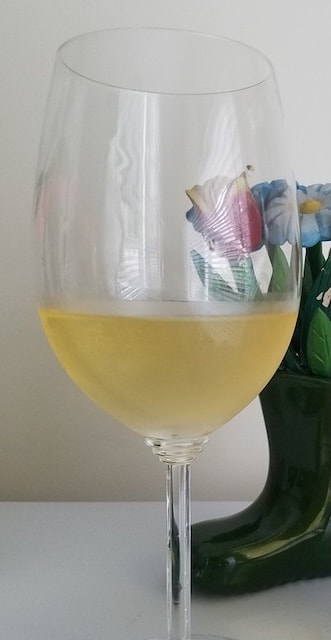
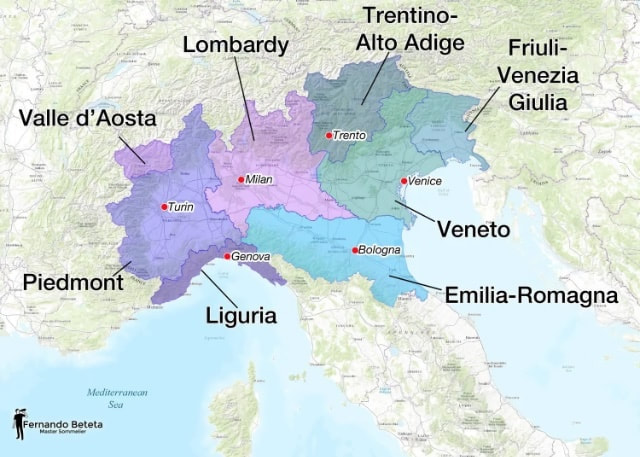
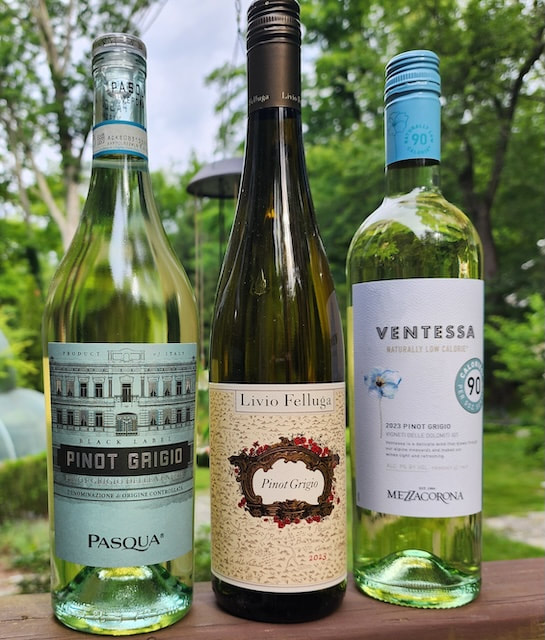
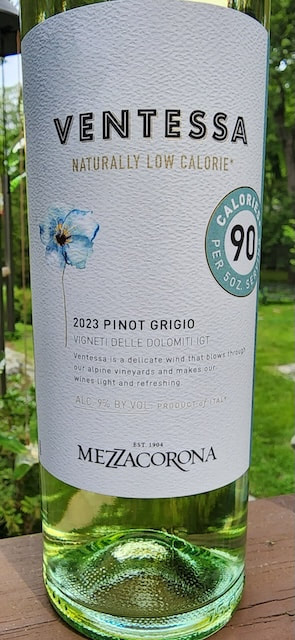
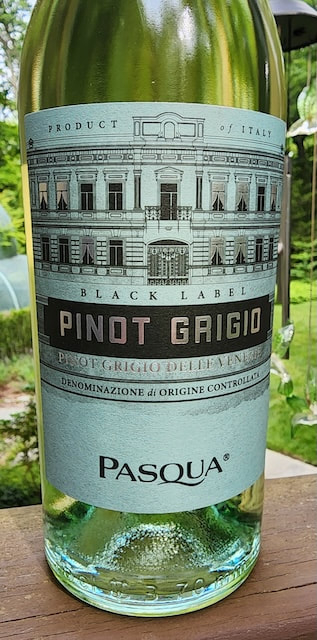
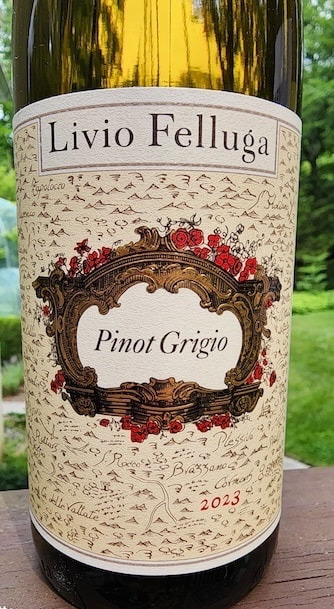
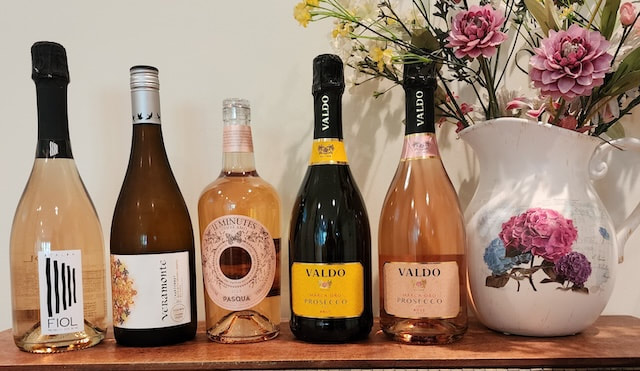
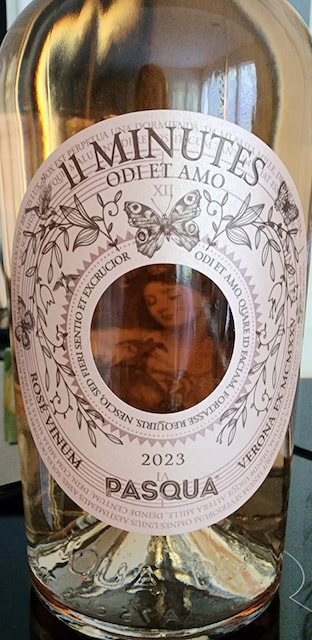
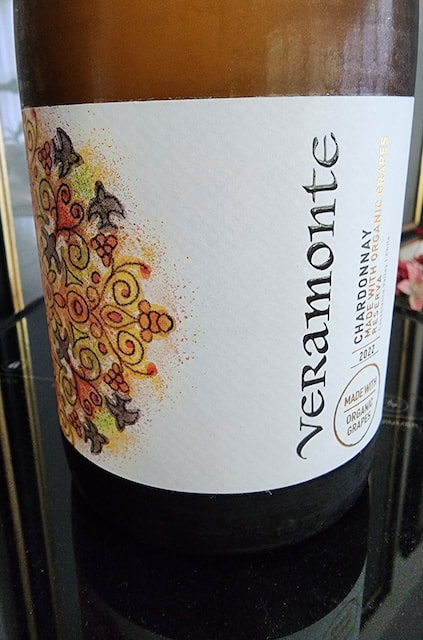
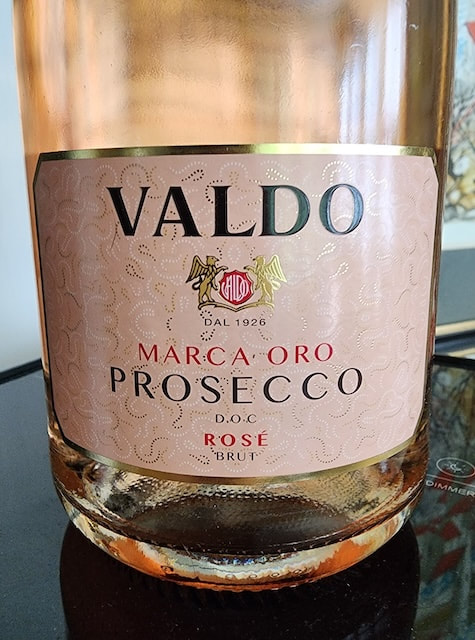
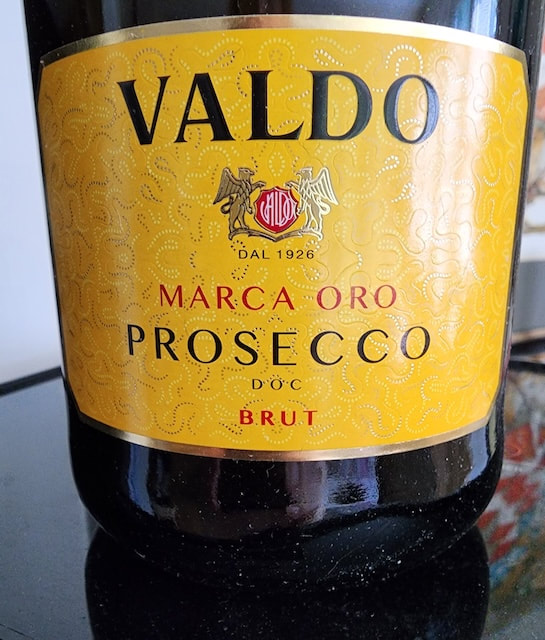
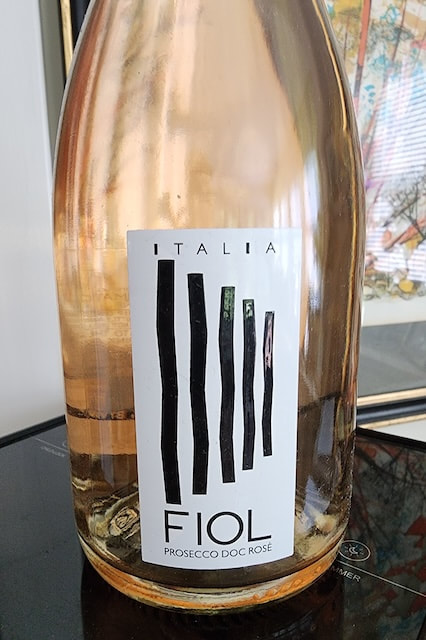
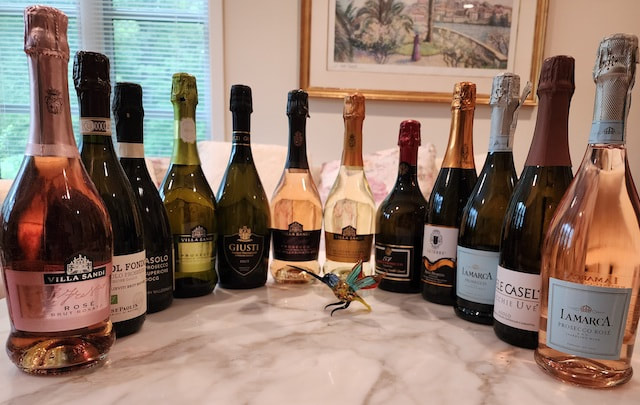
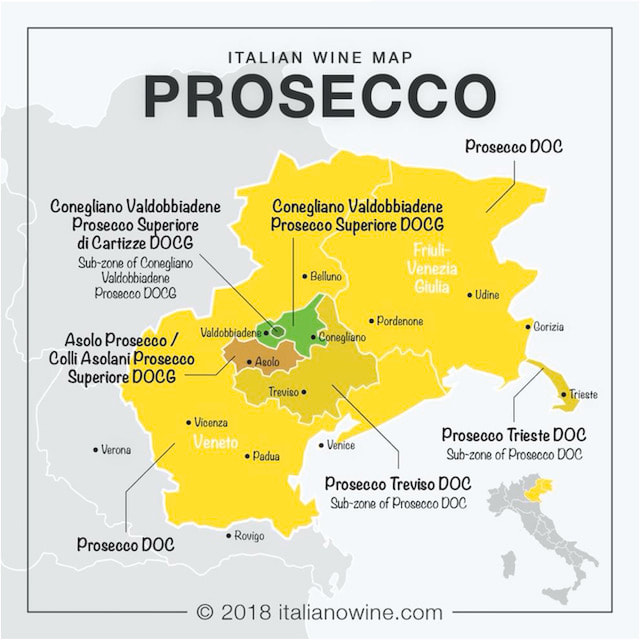
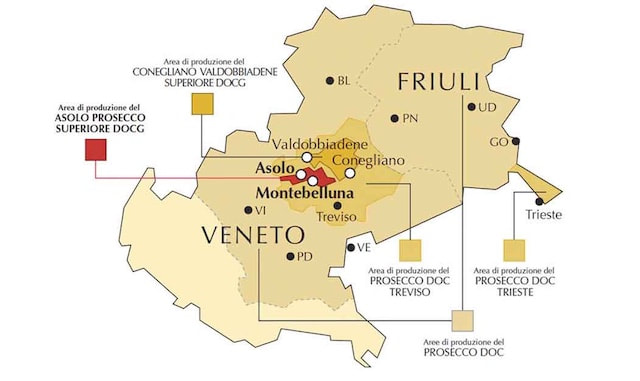
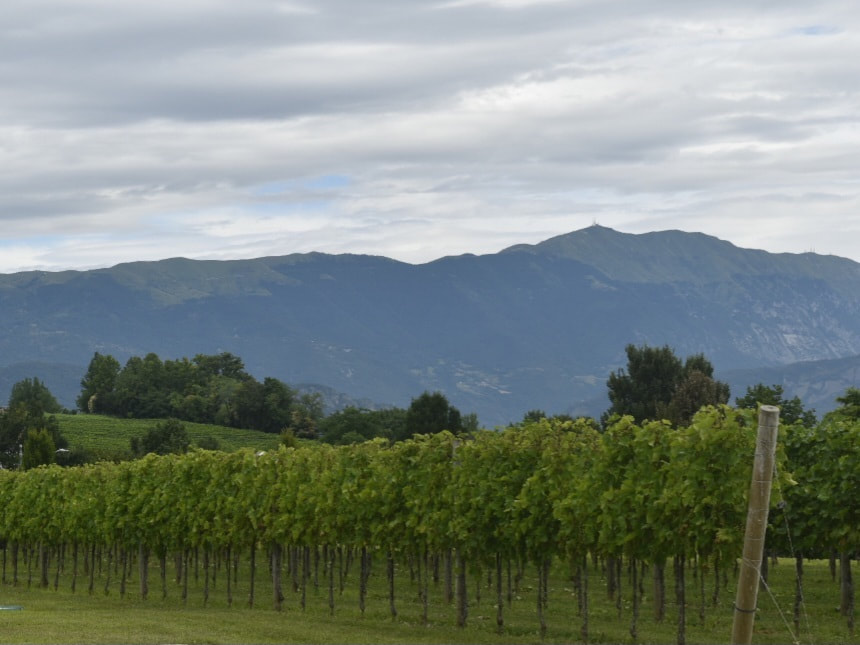
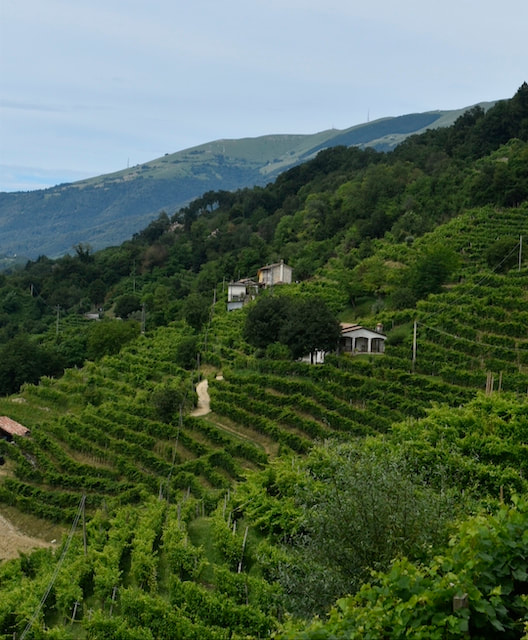
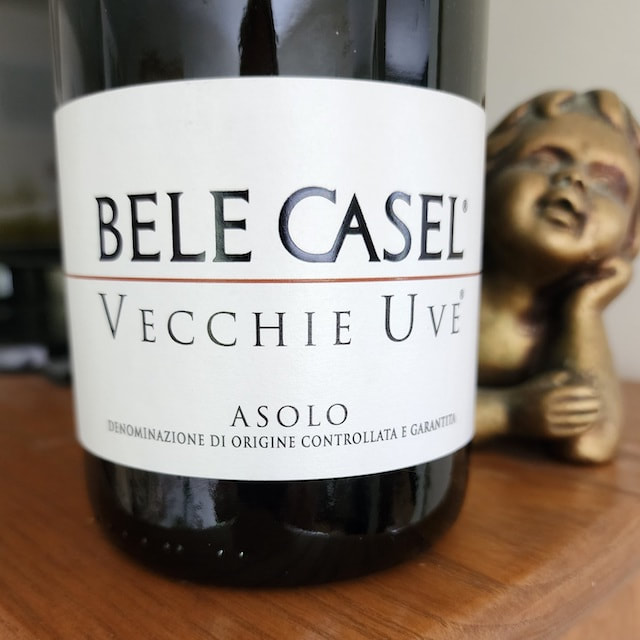
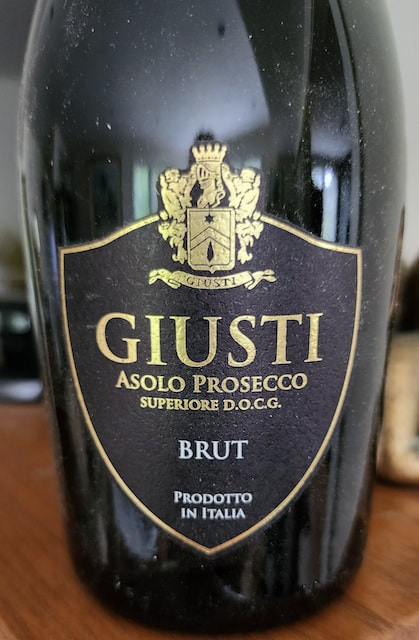
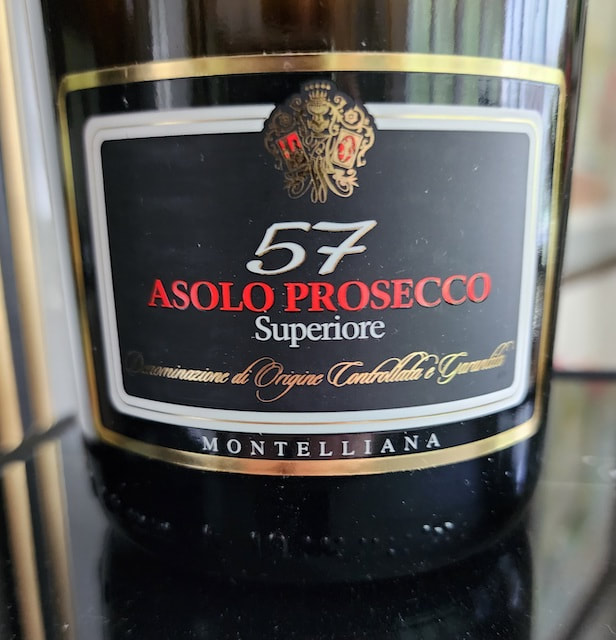
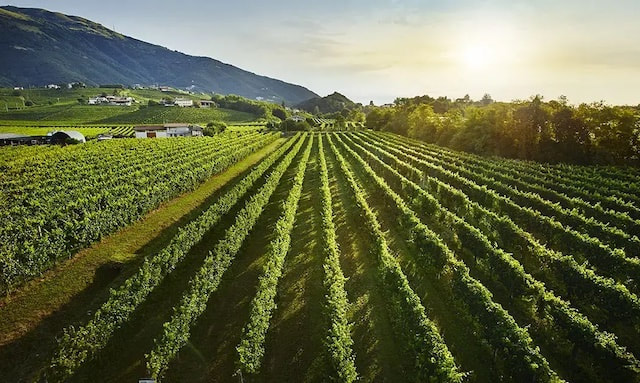
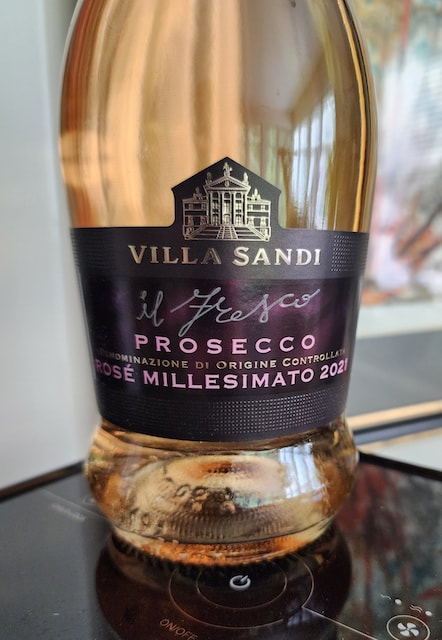
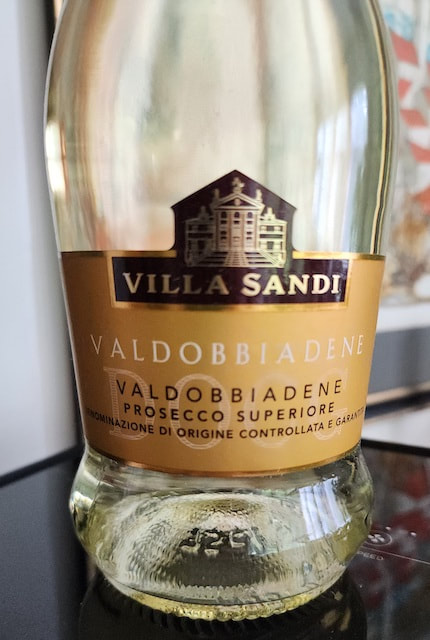
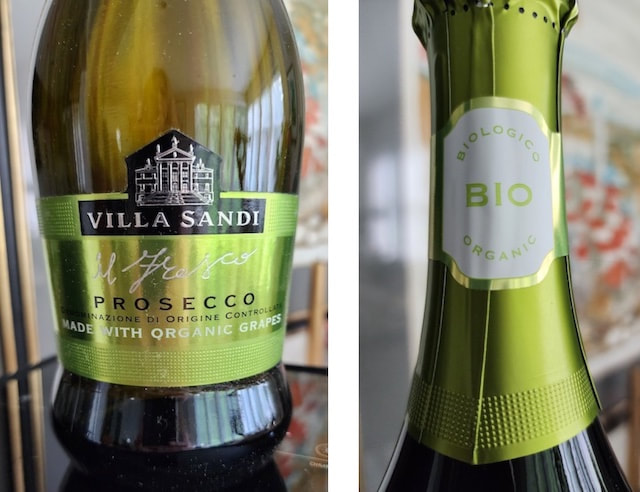
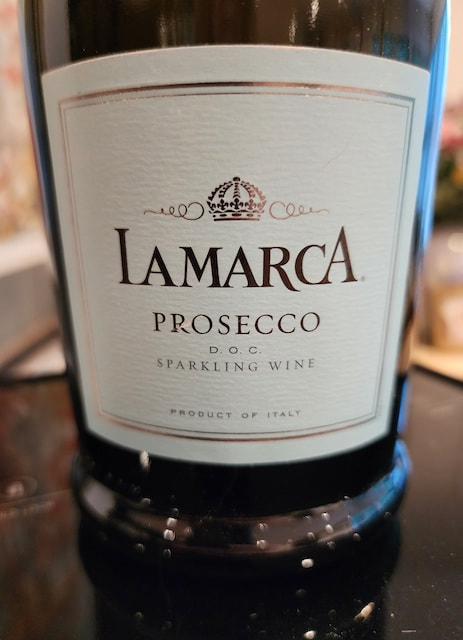
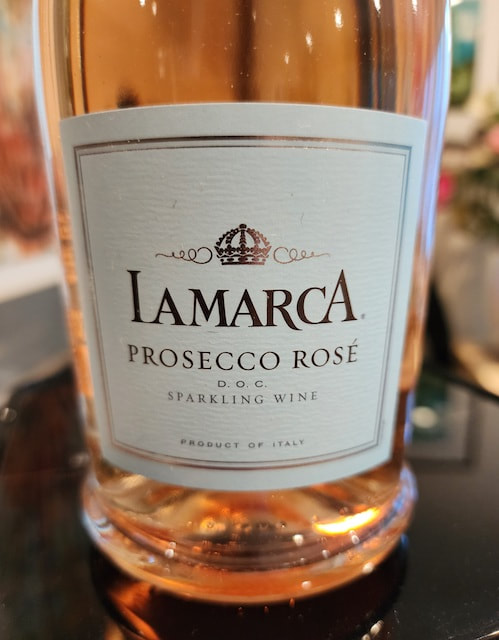
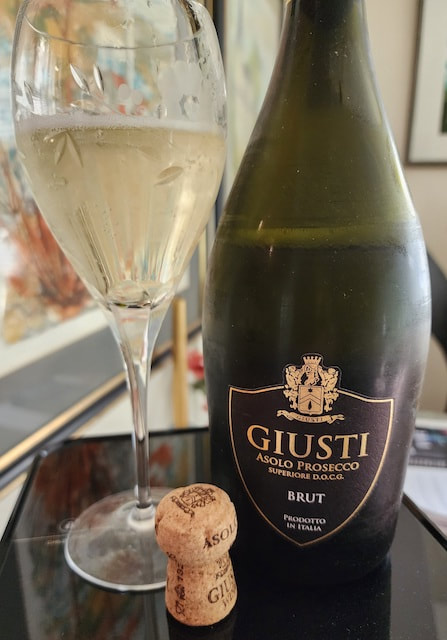
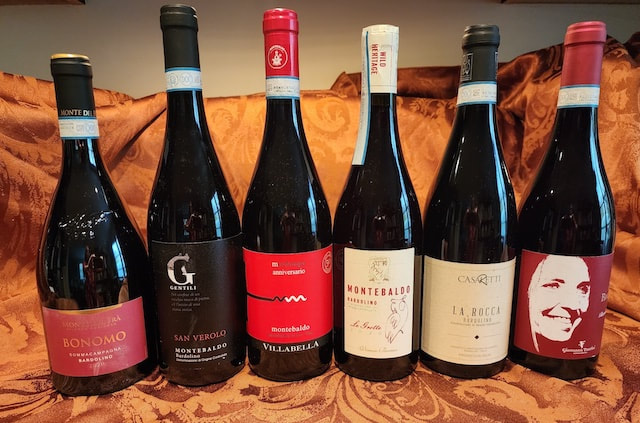
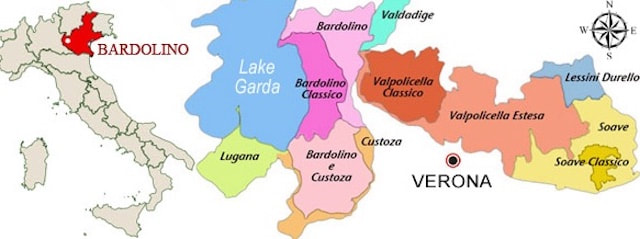
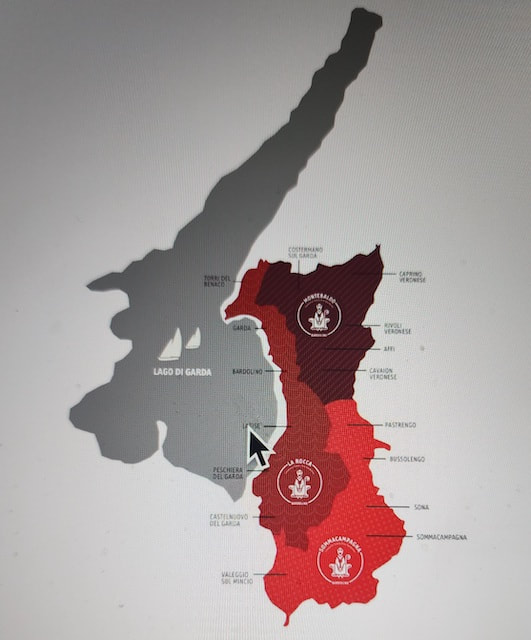
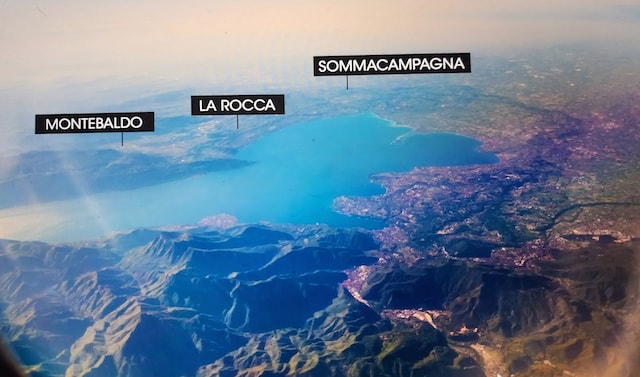
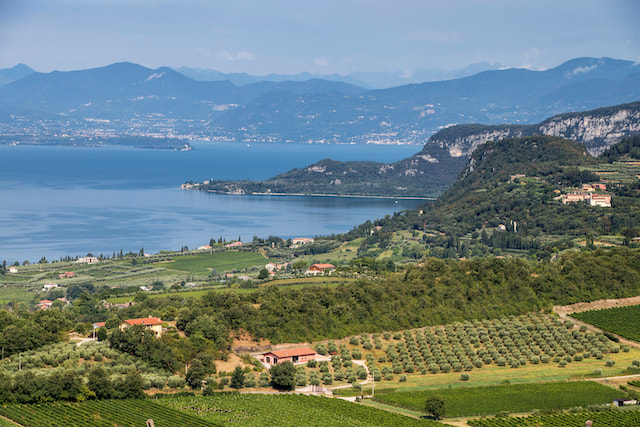
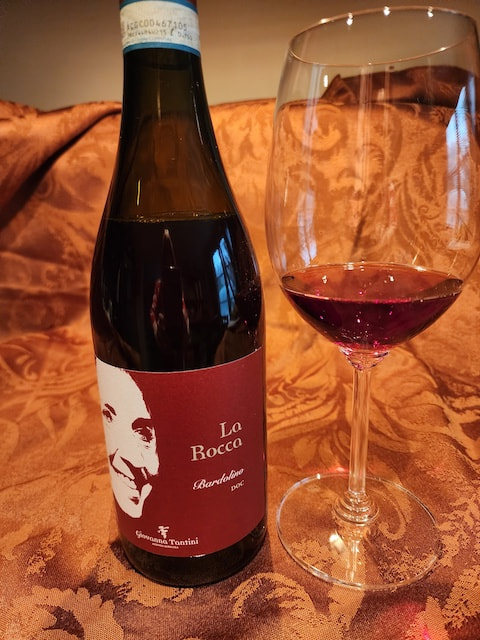
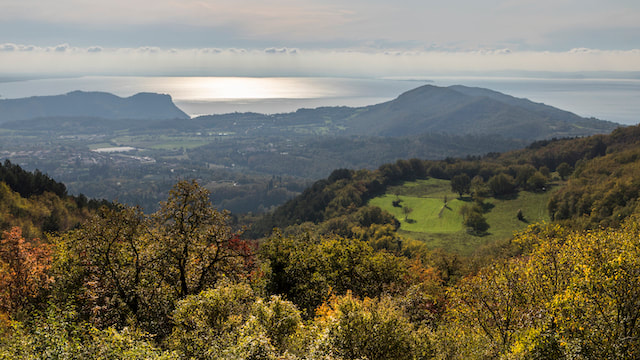
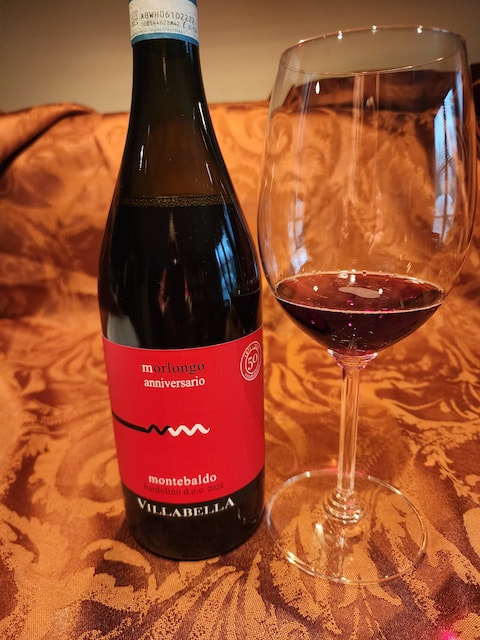
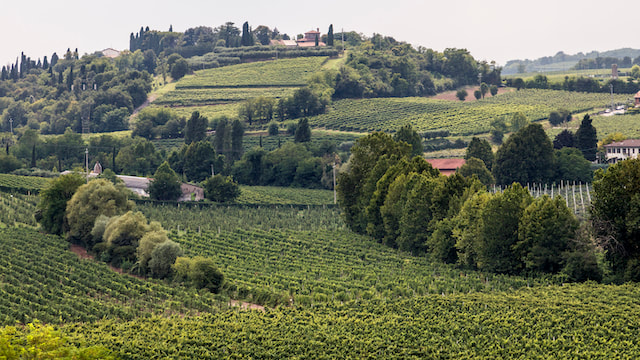
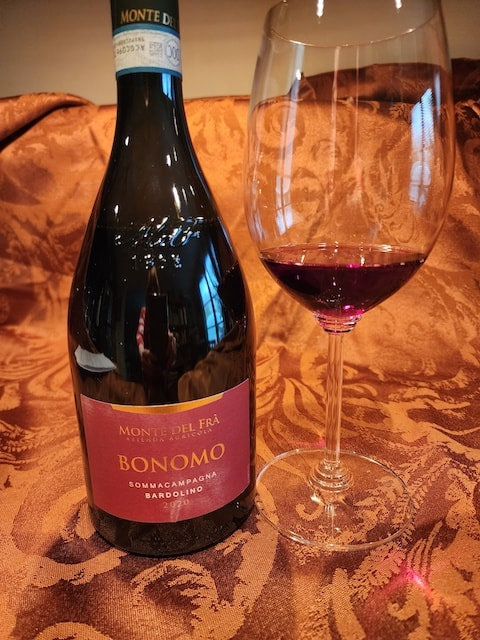
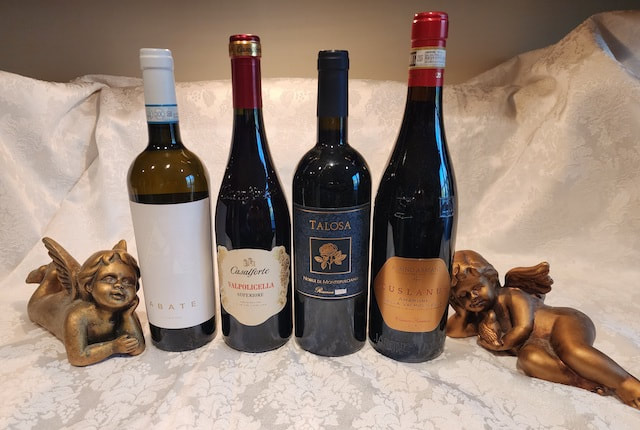
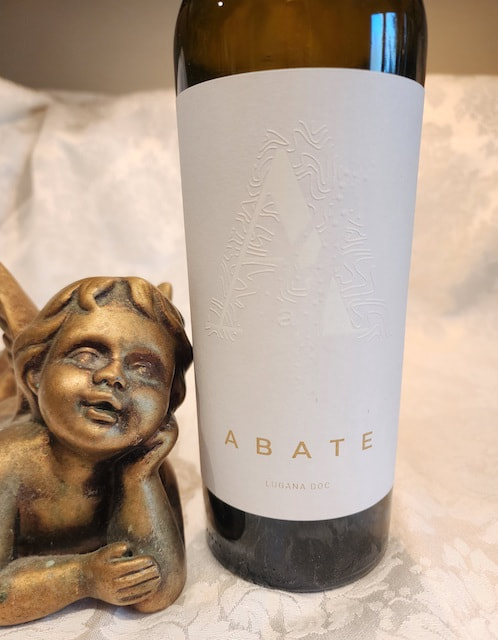
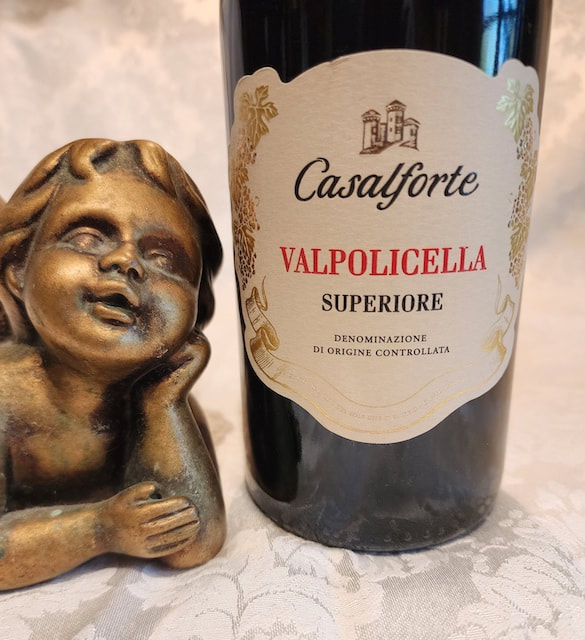
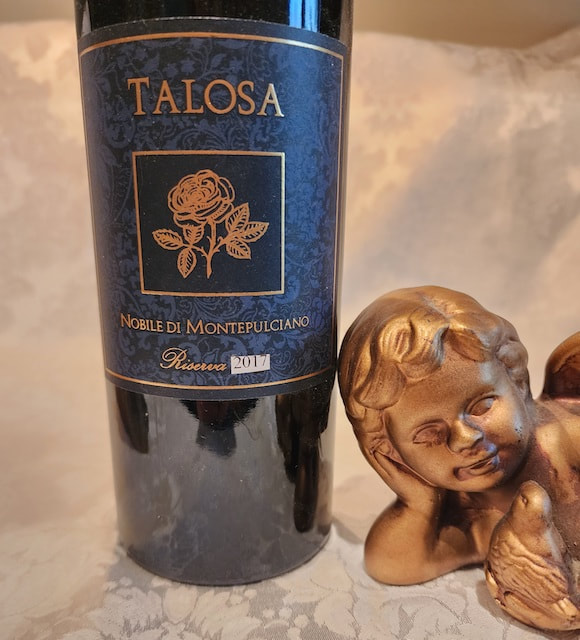
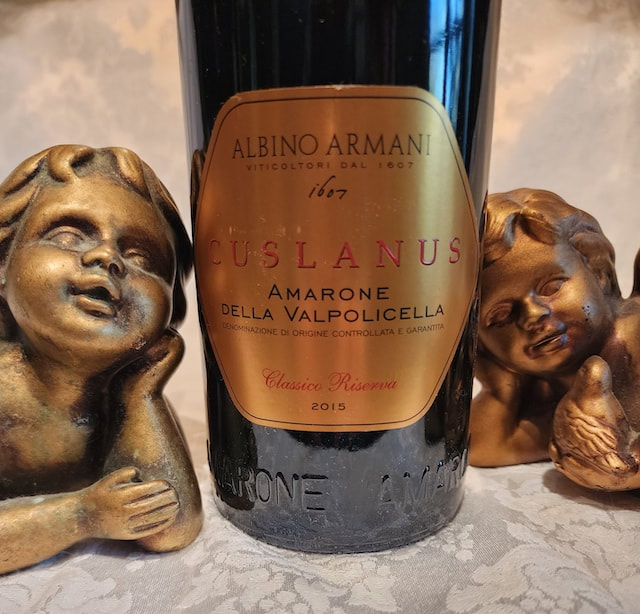
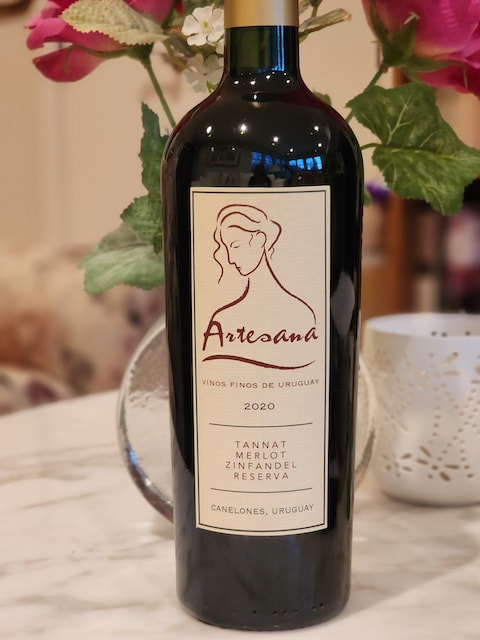
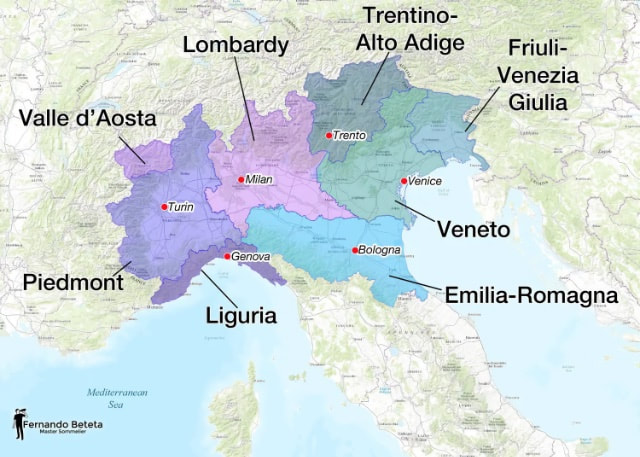
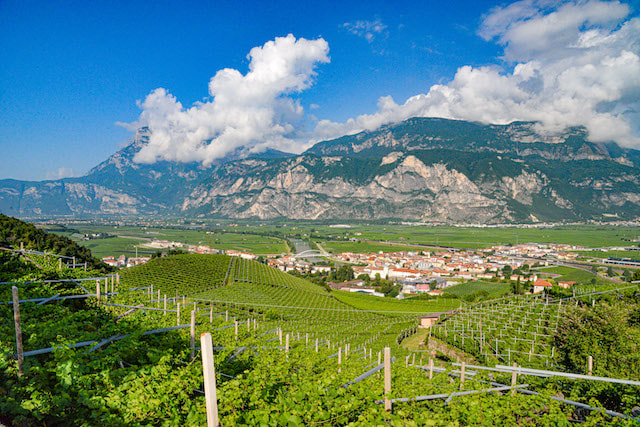
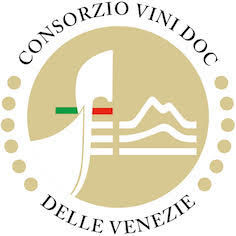
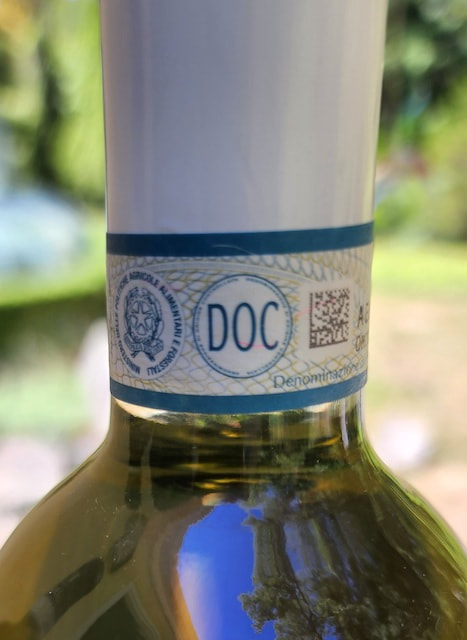
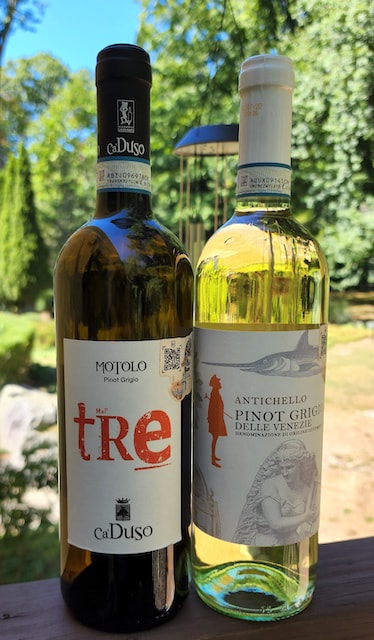
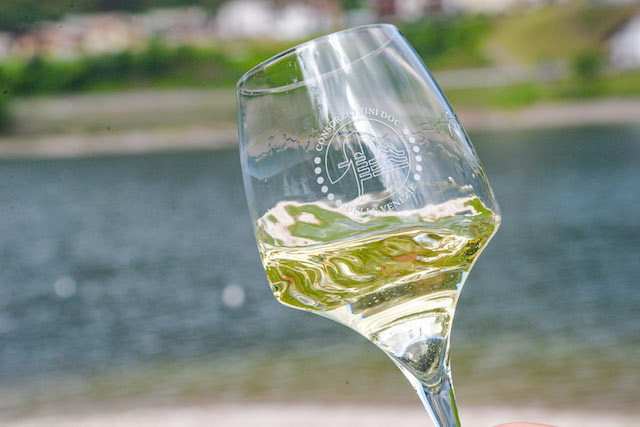

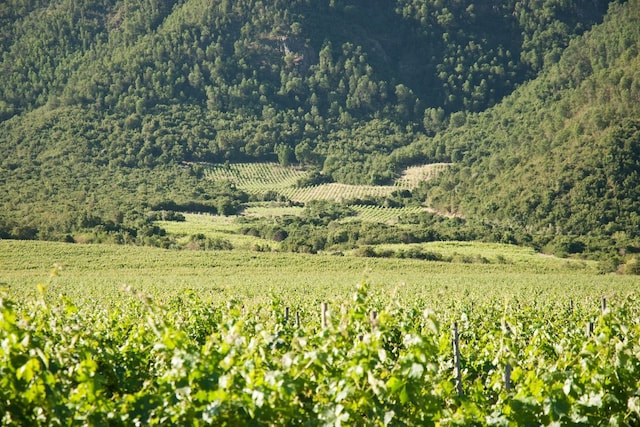
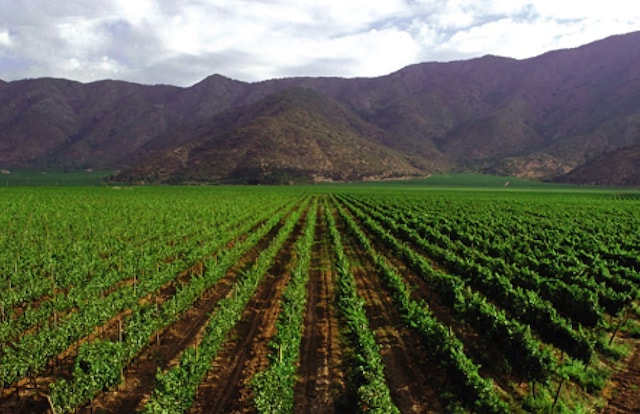
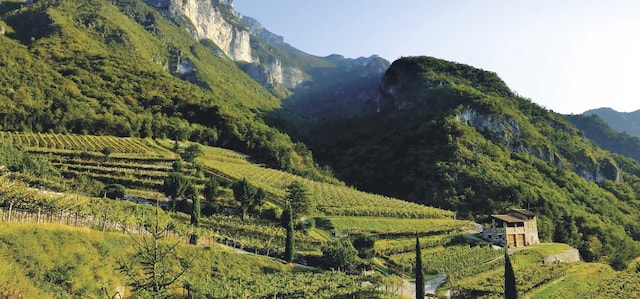

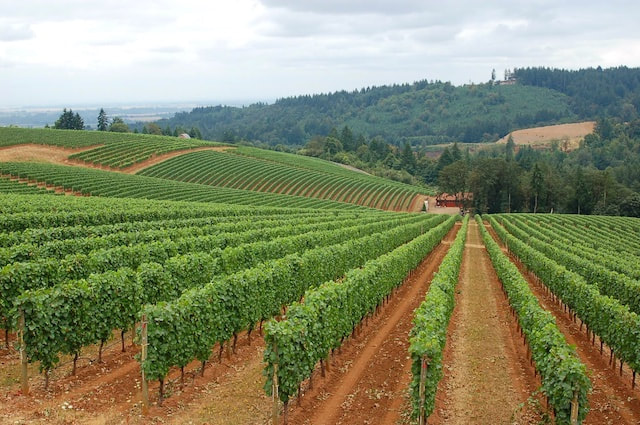
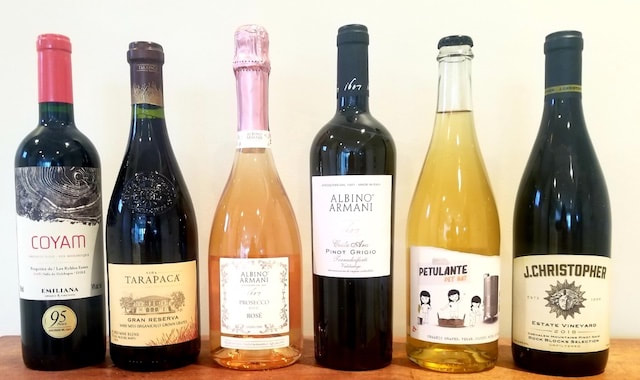
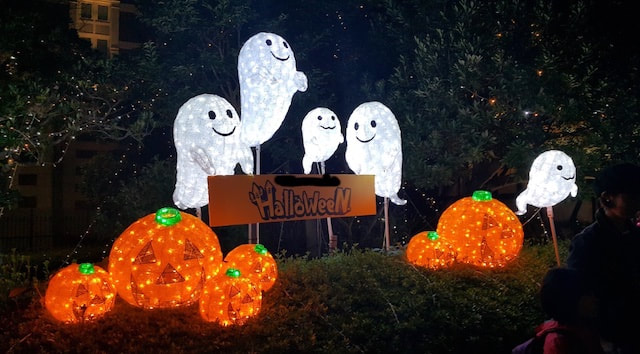
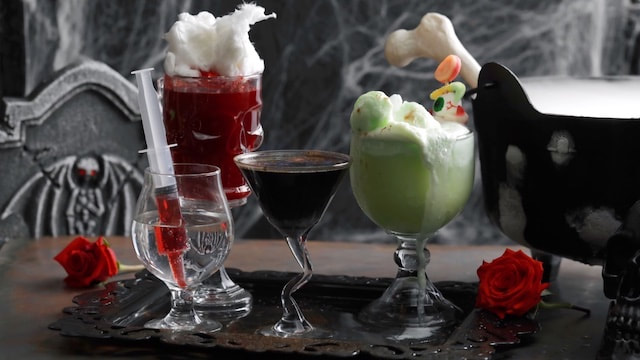
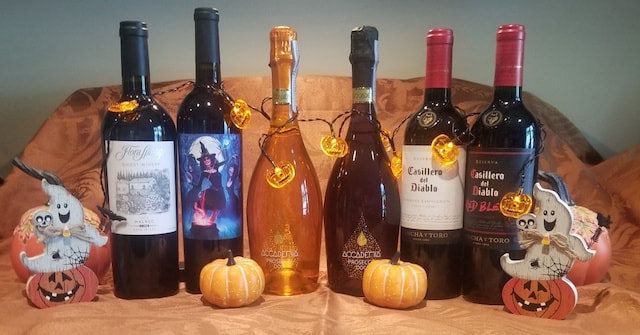
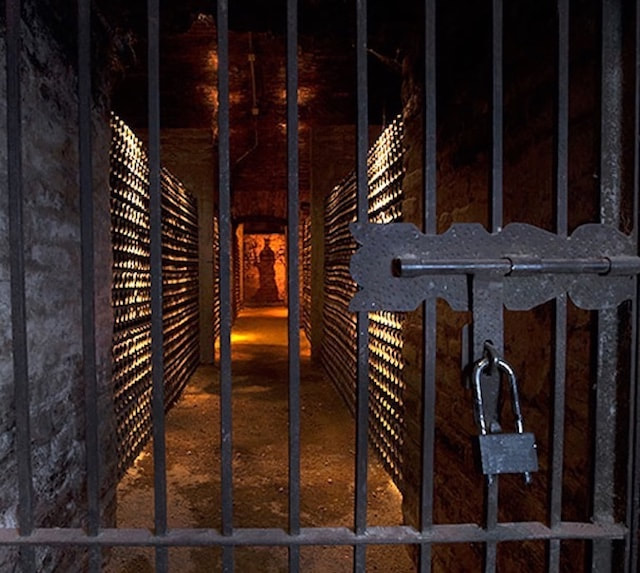
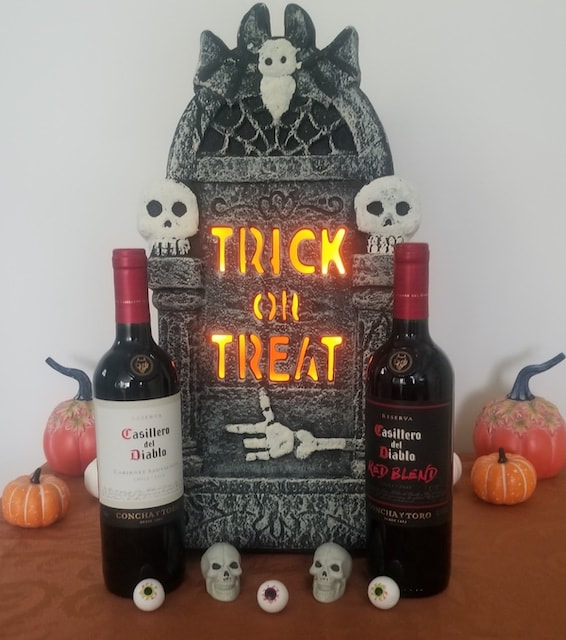








 RSS Feed
RSS Feed